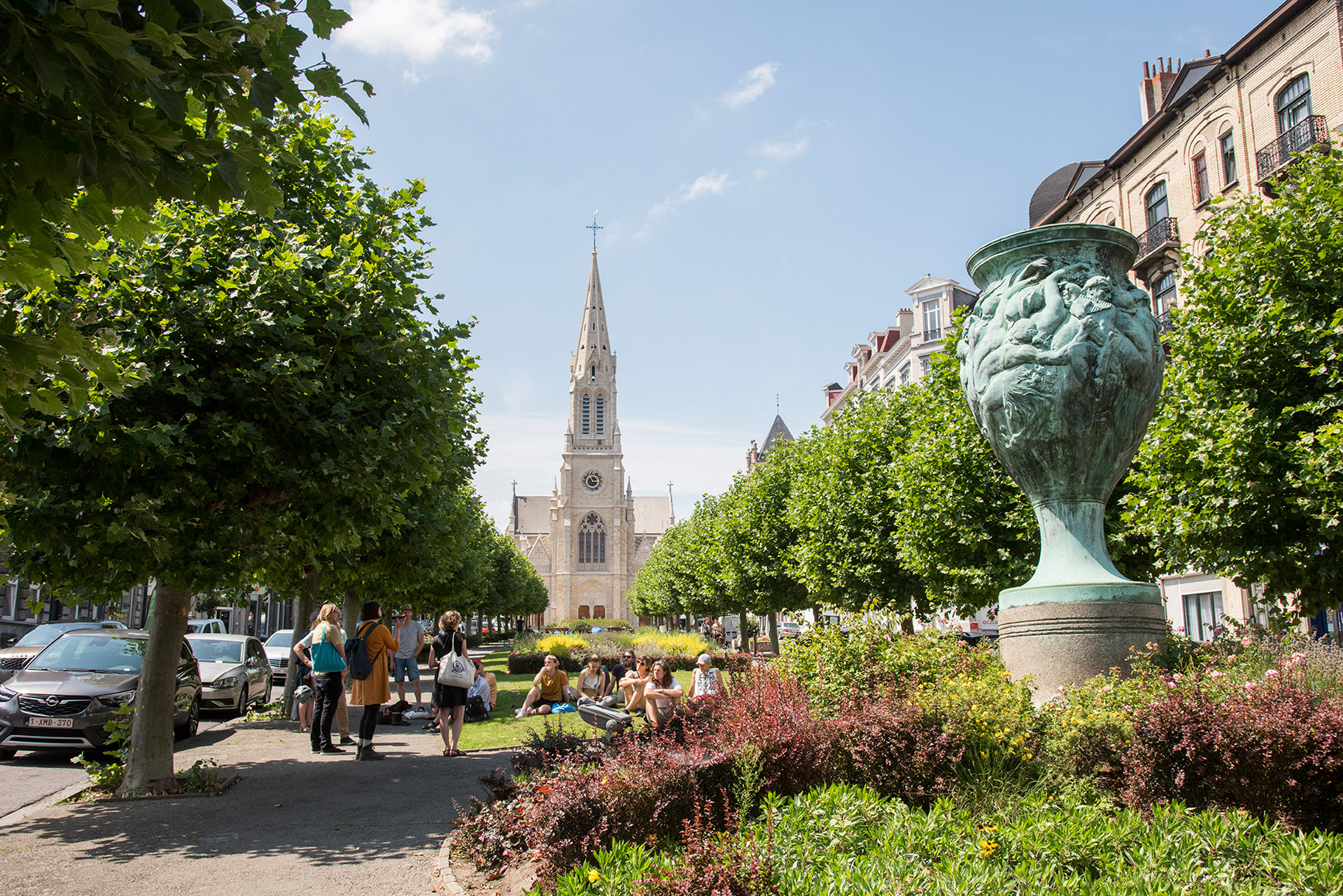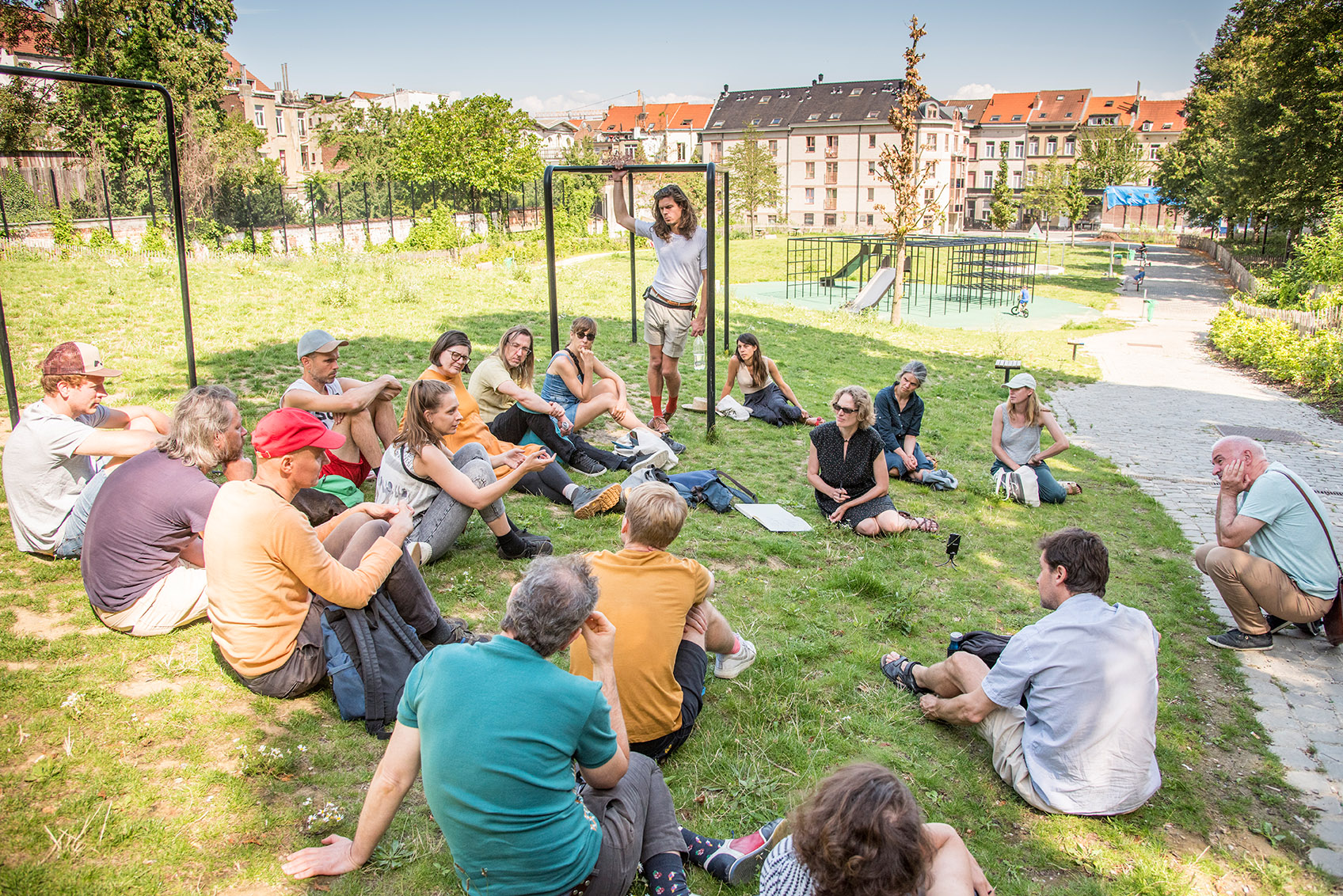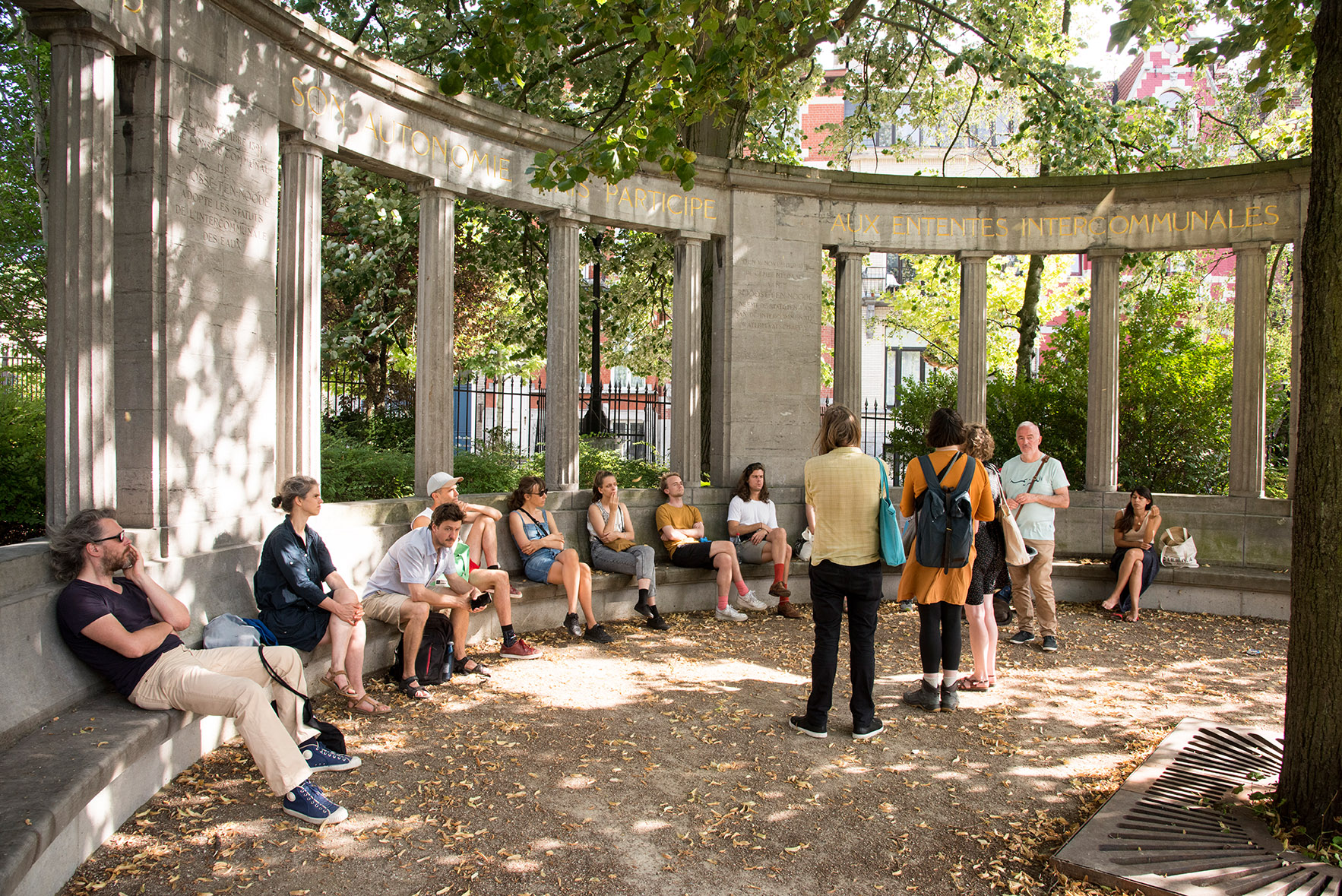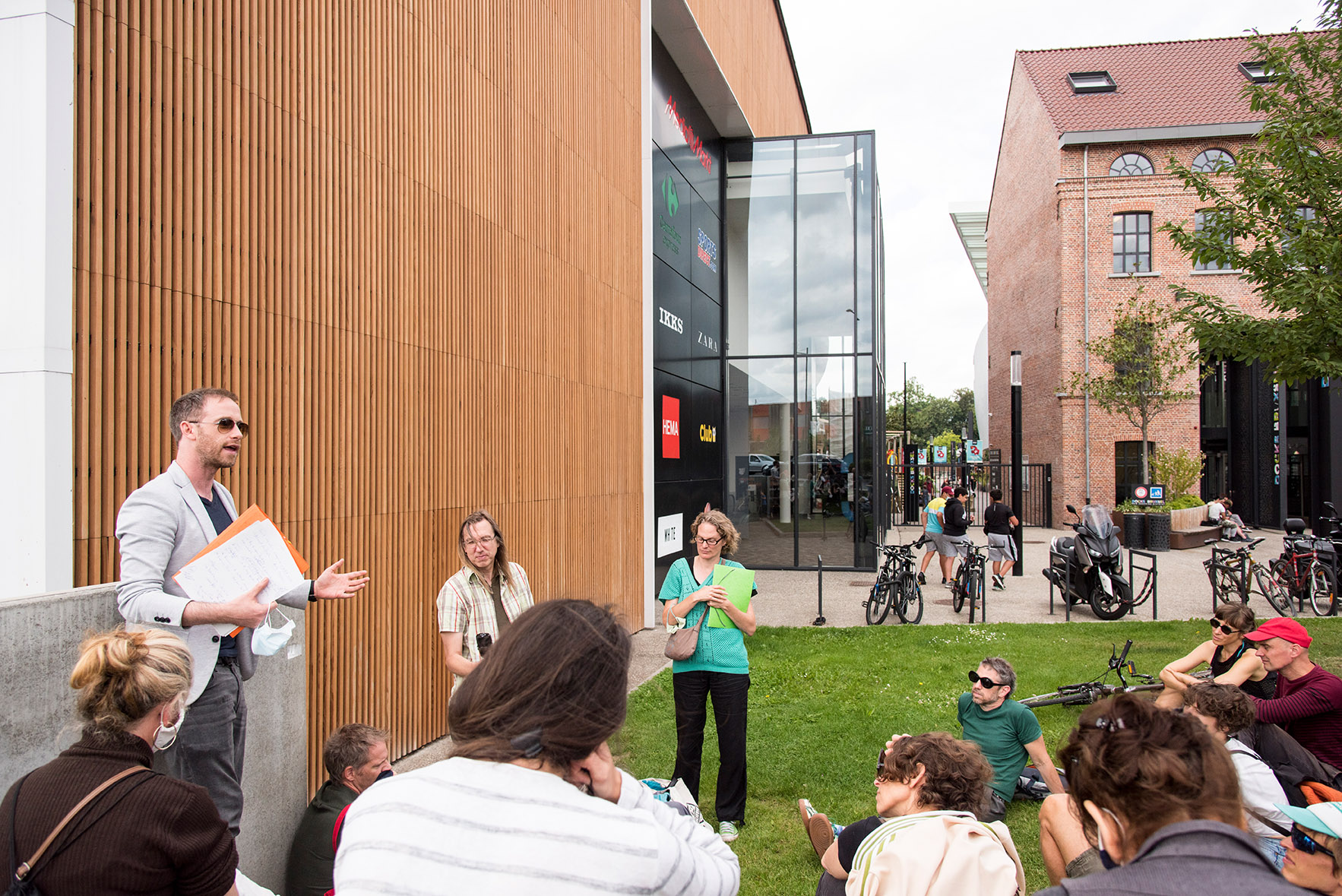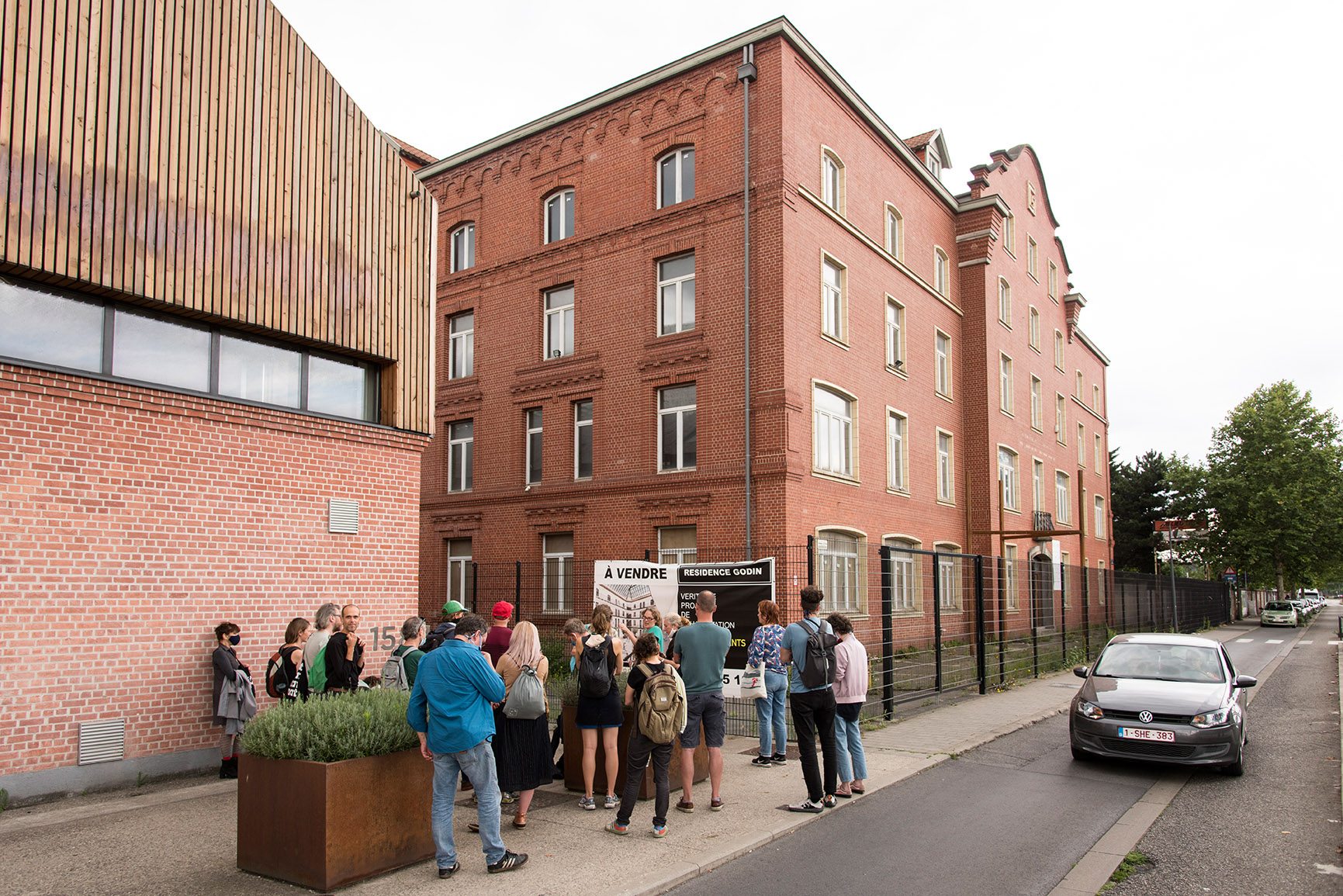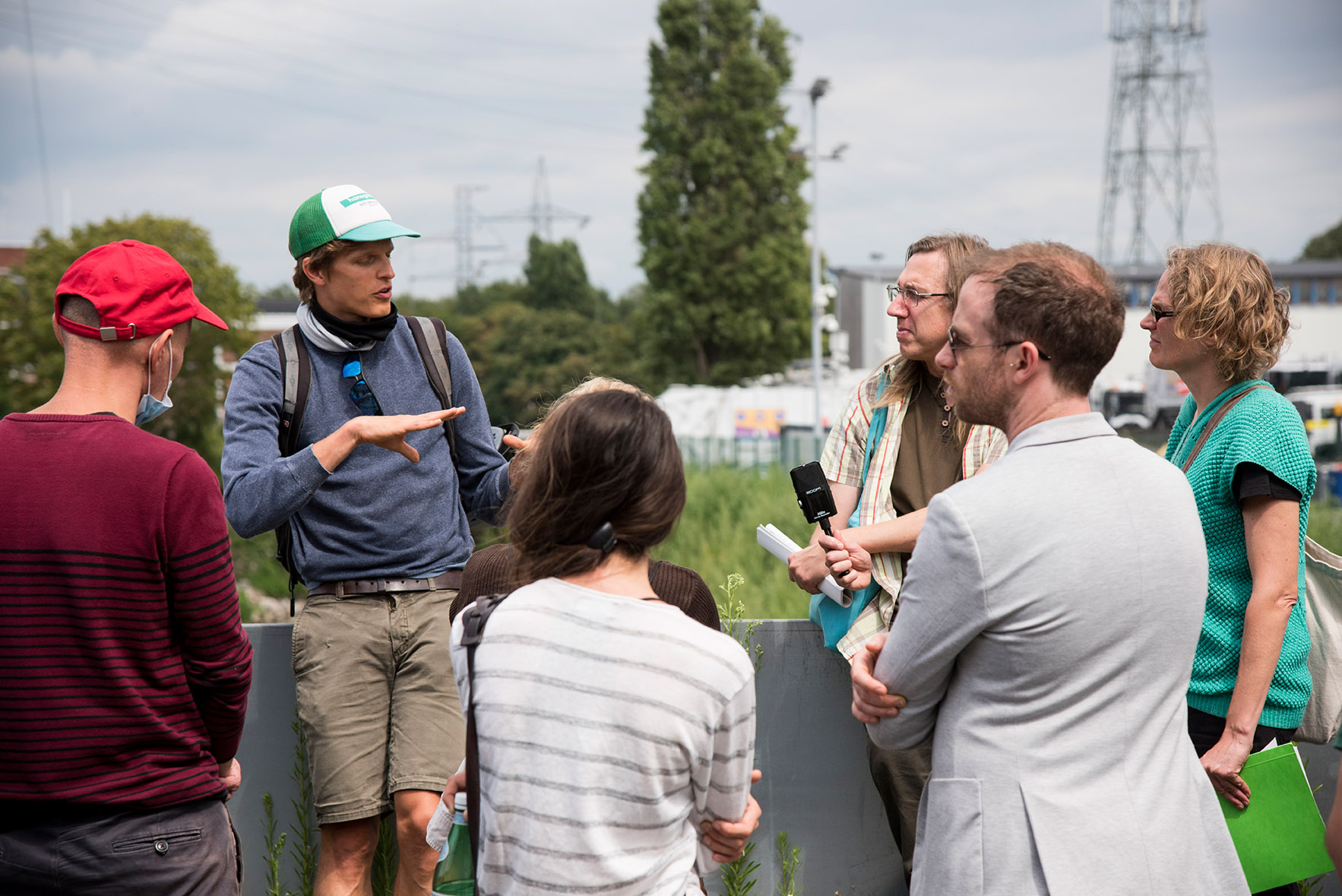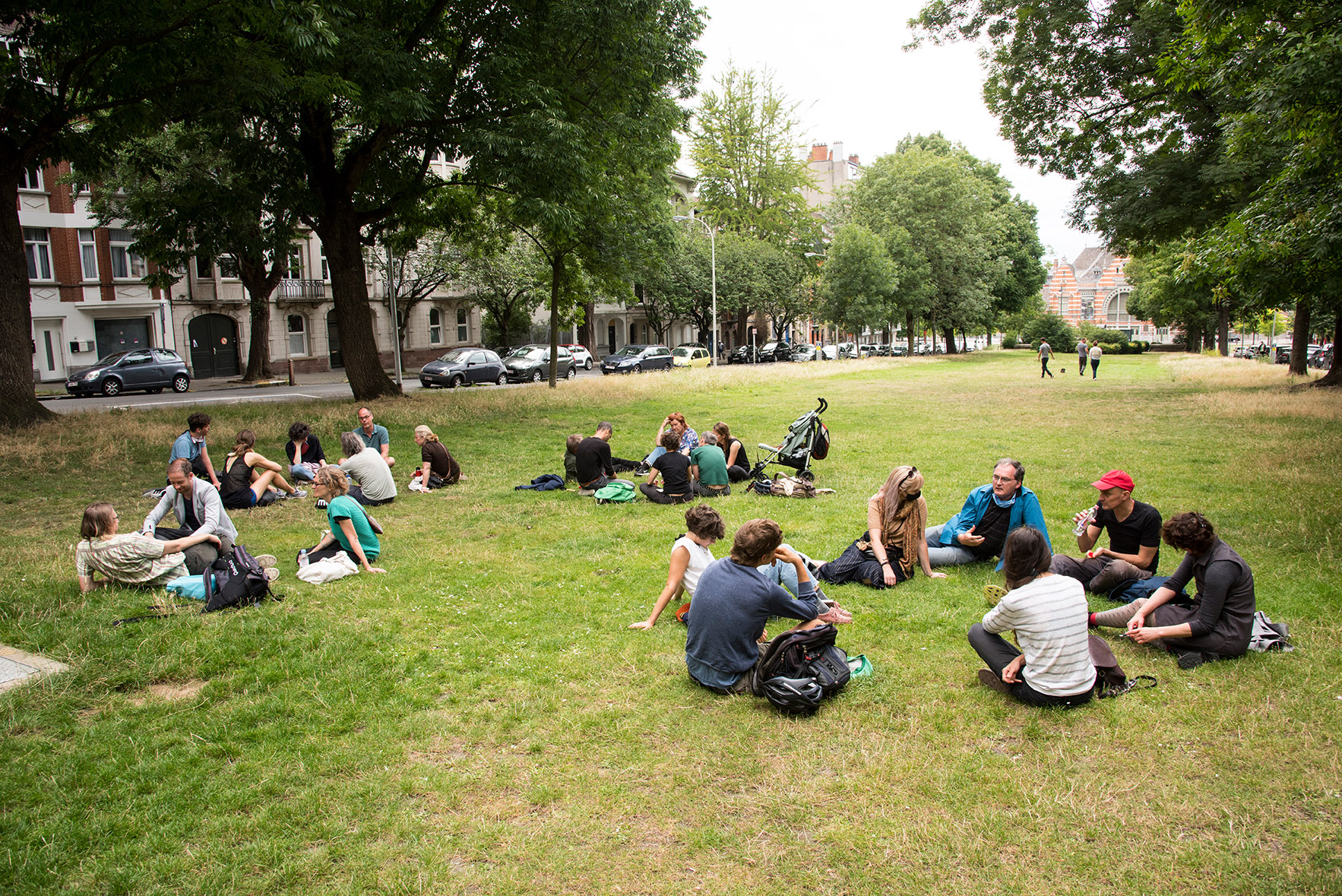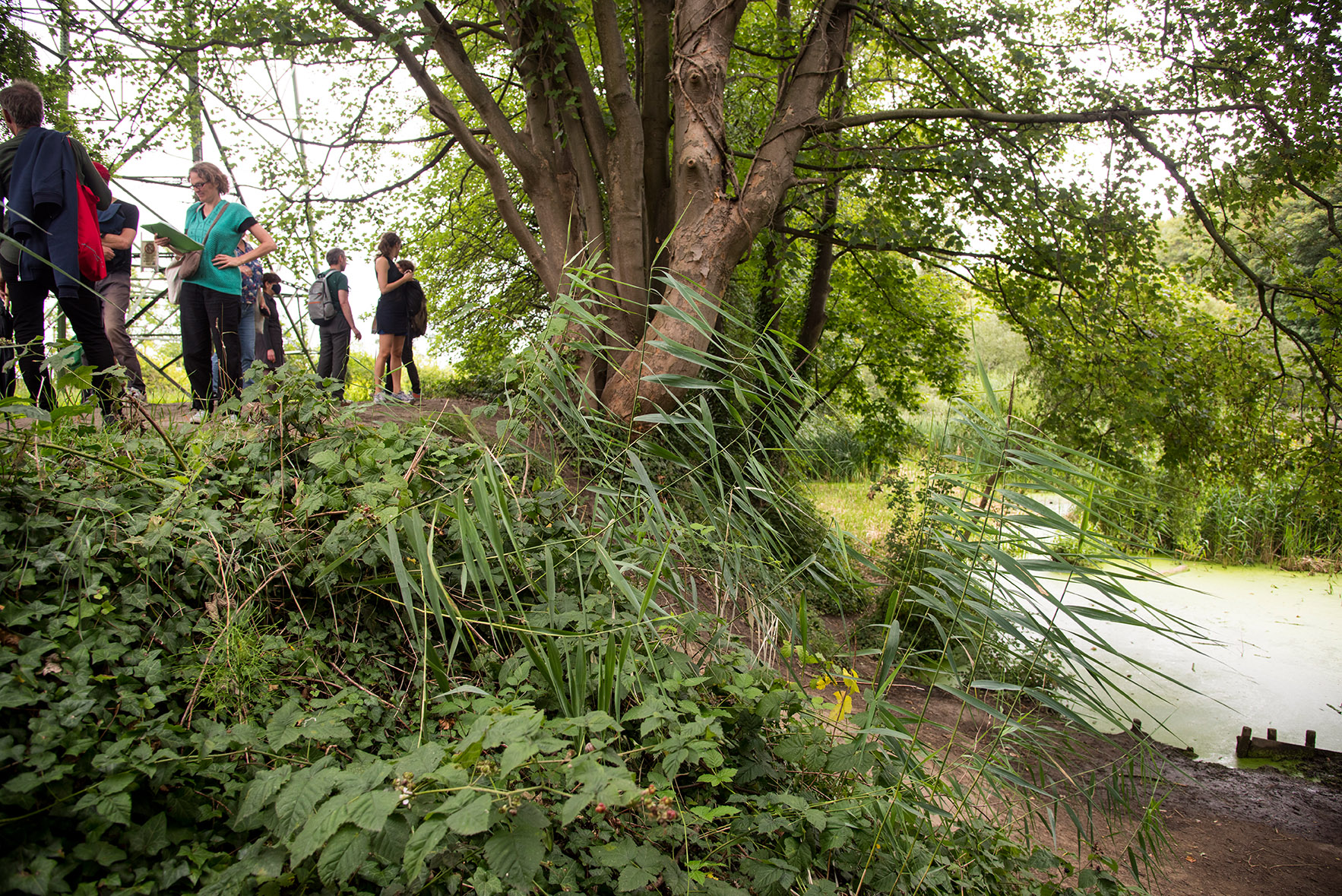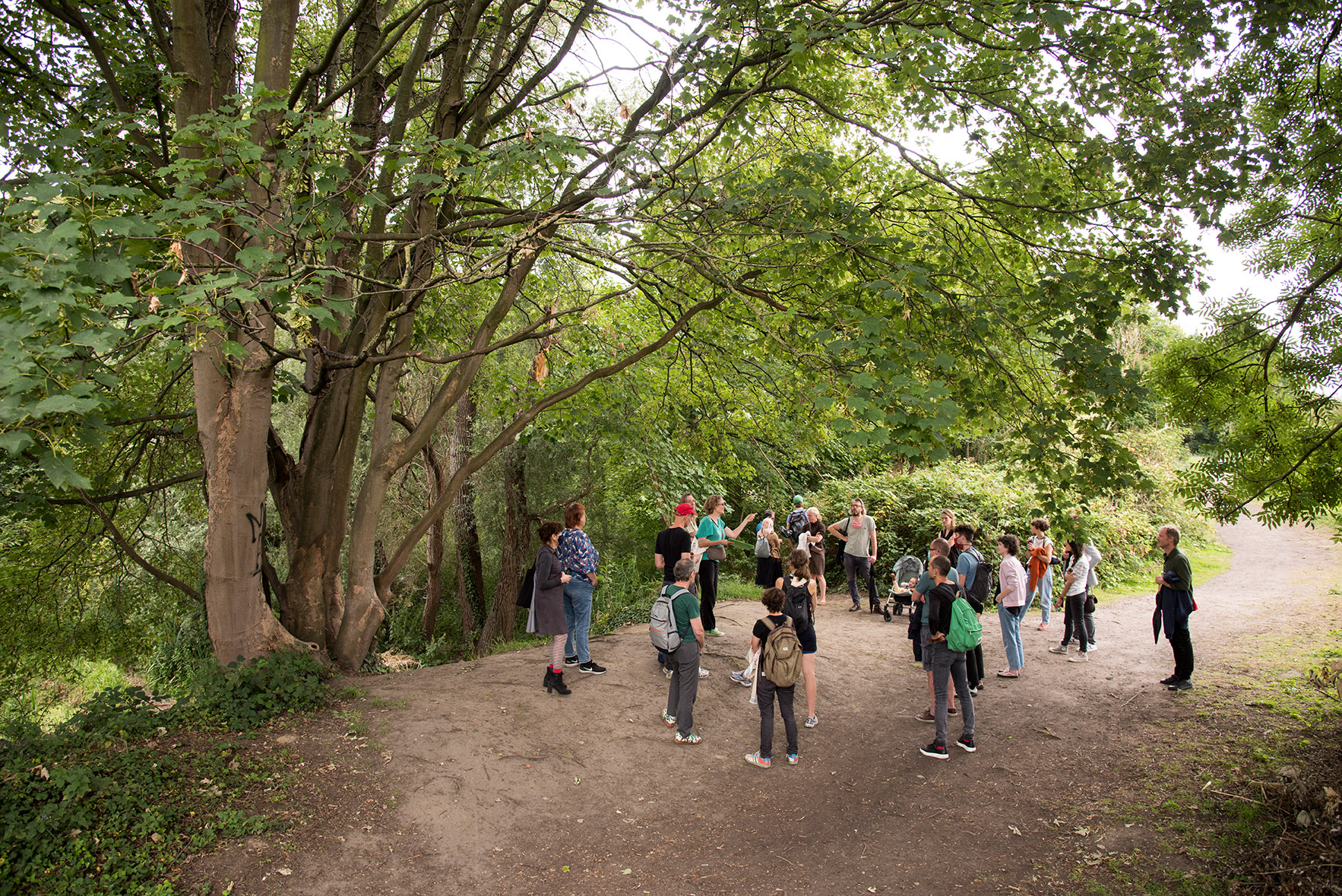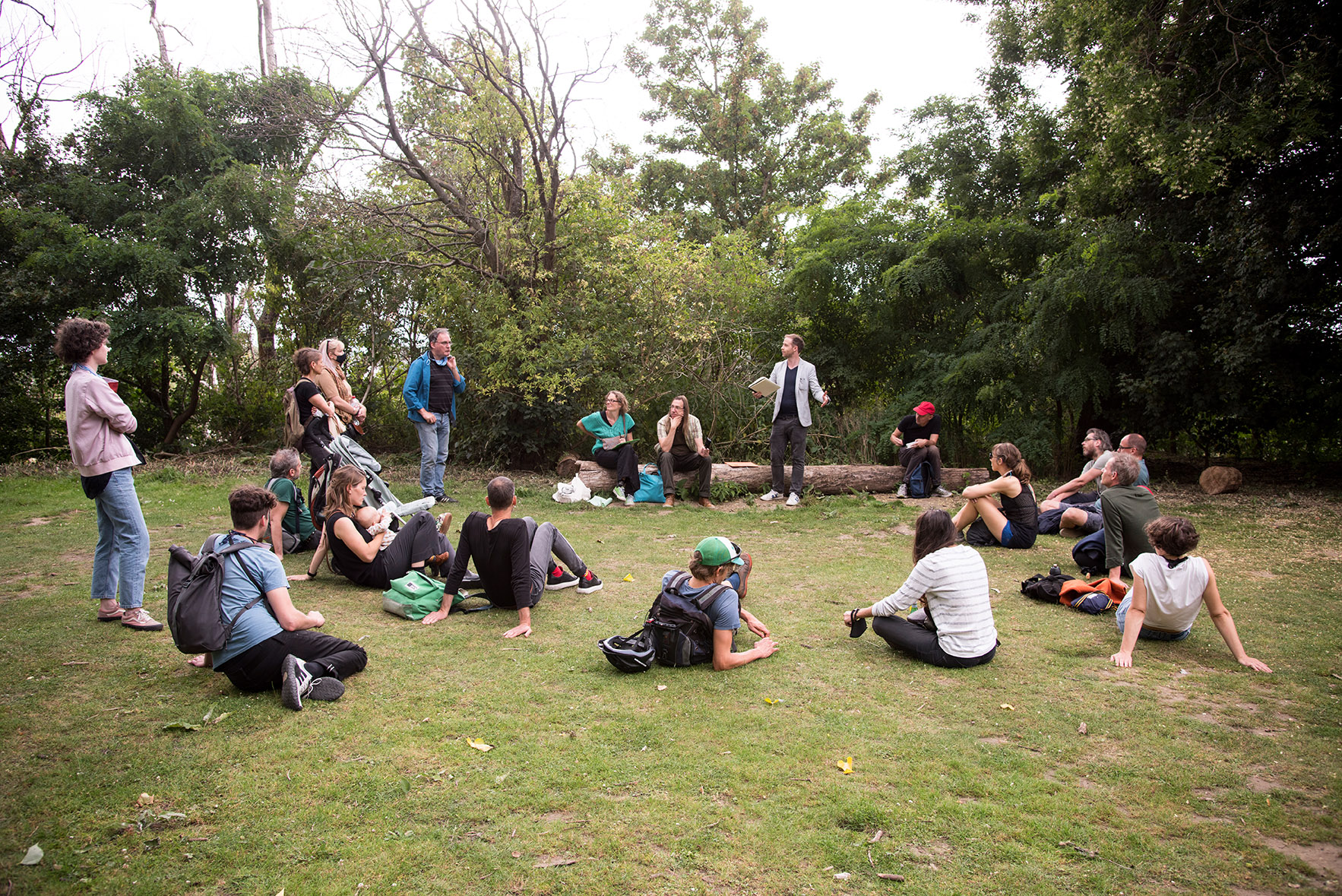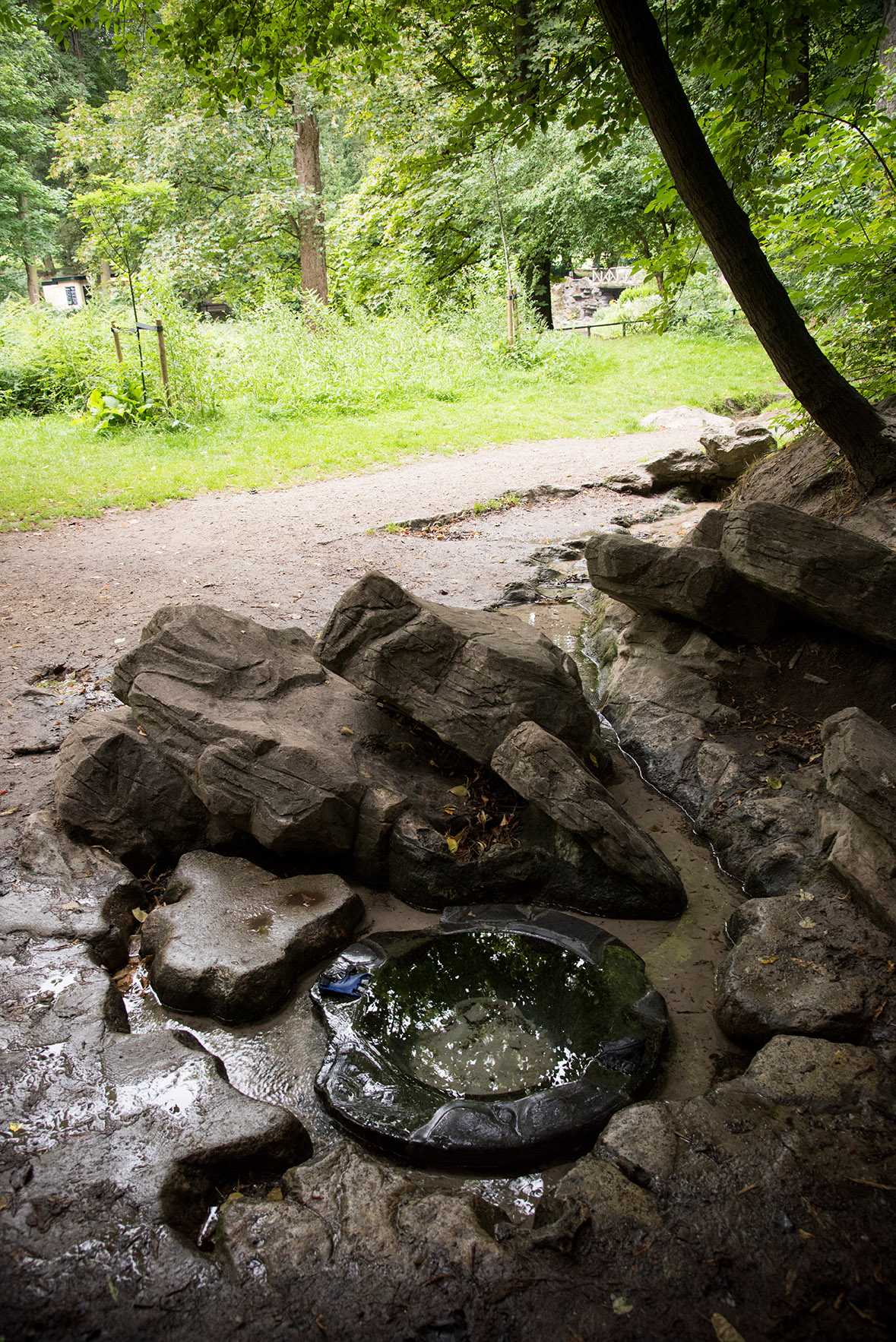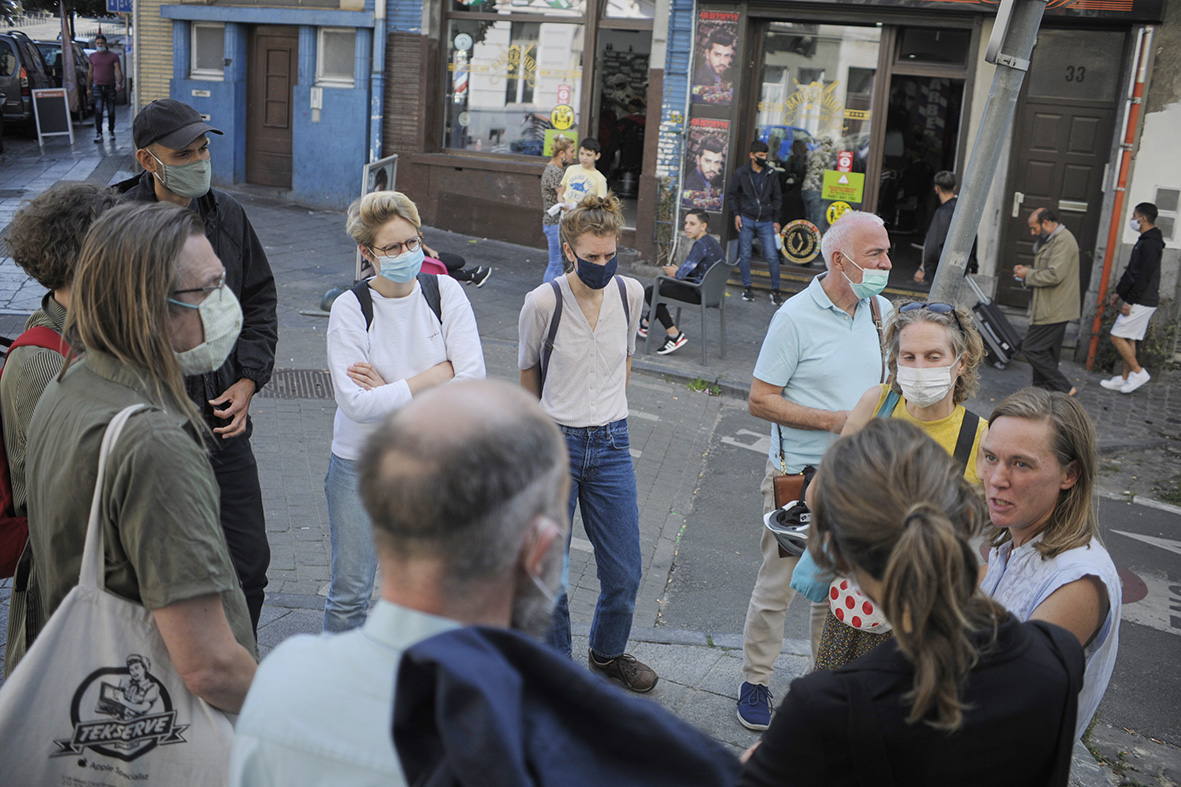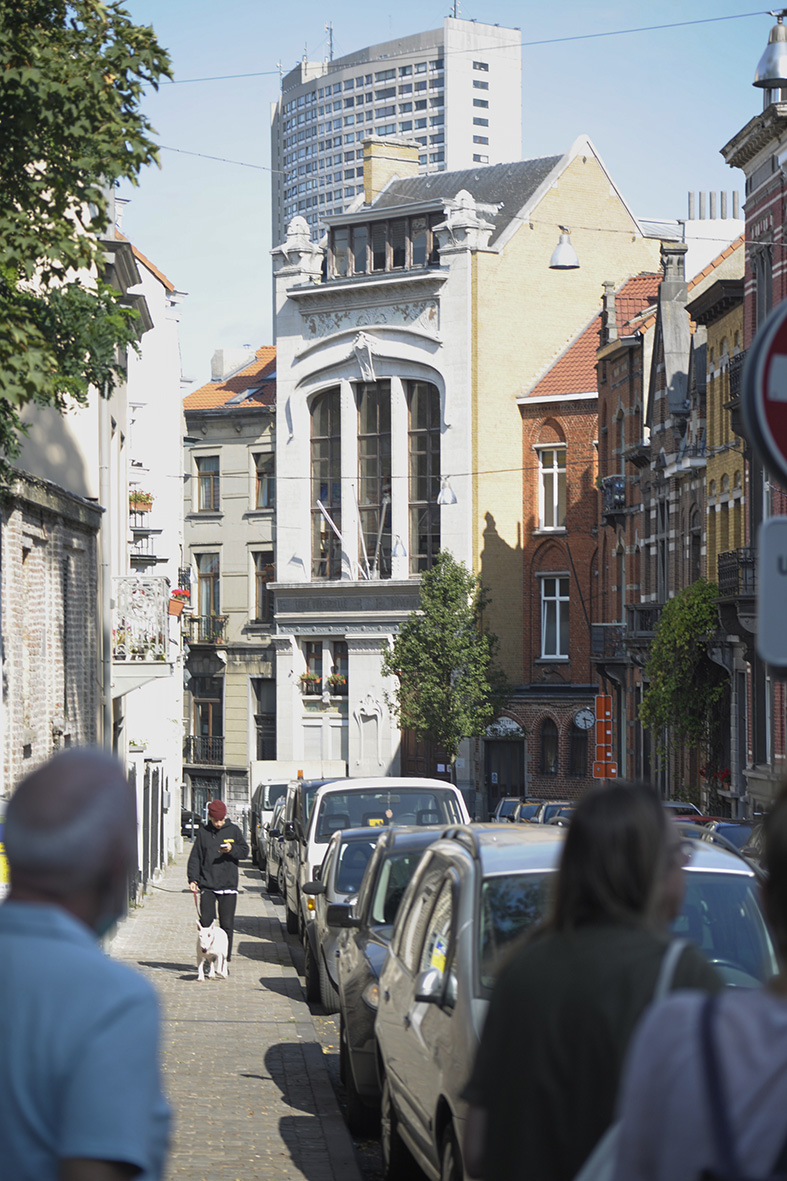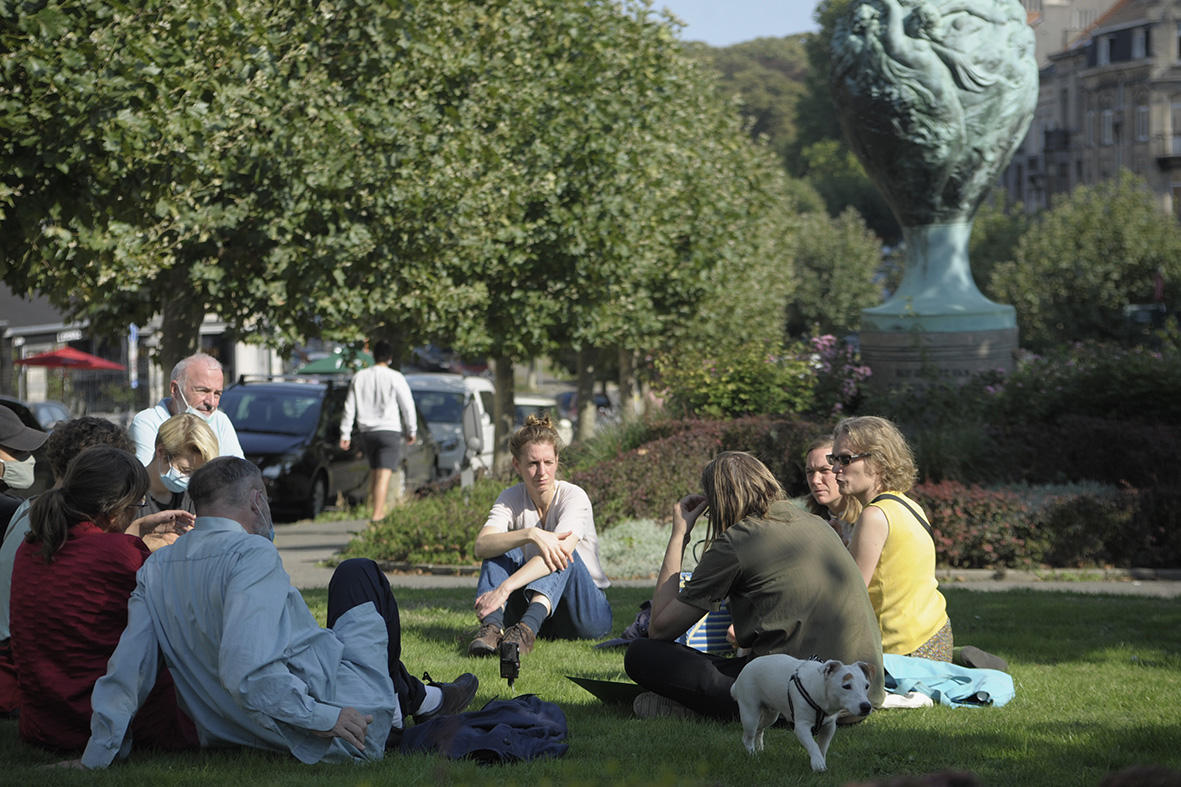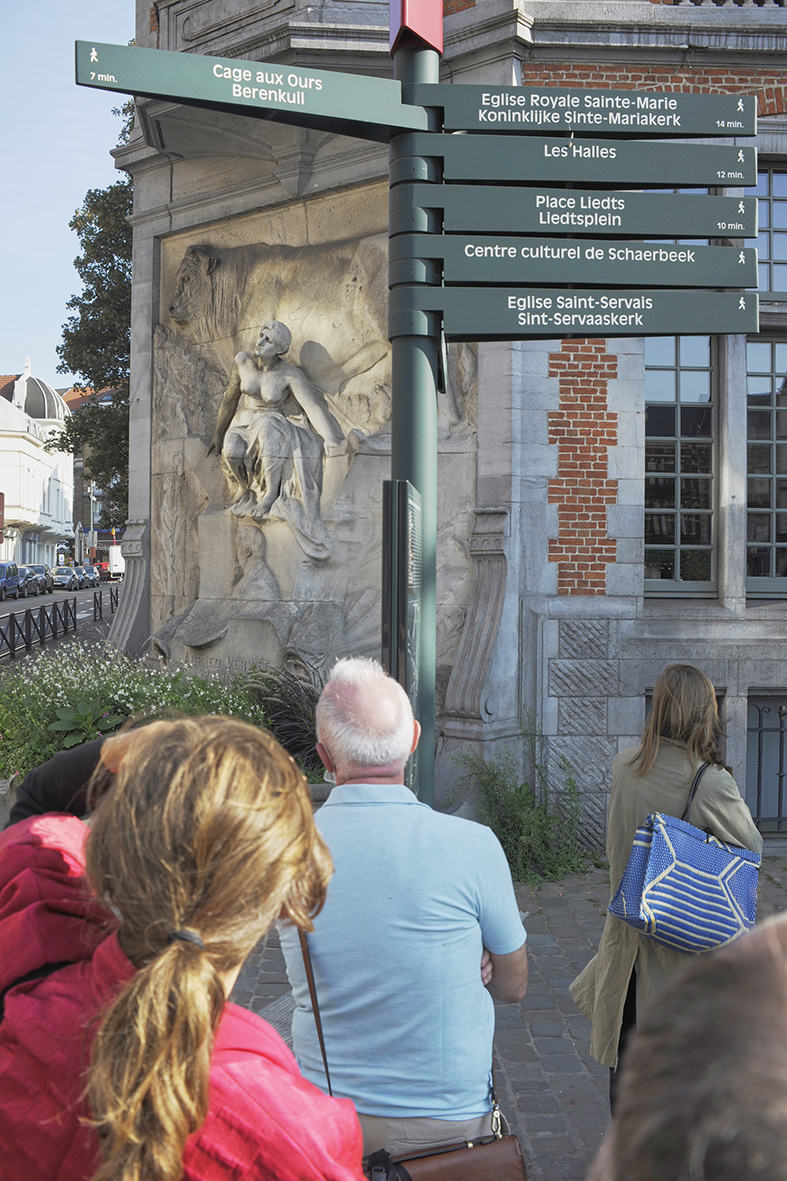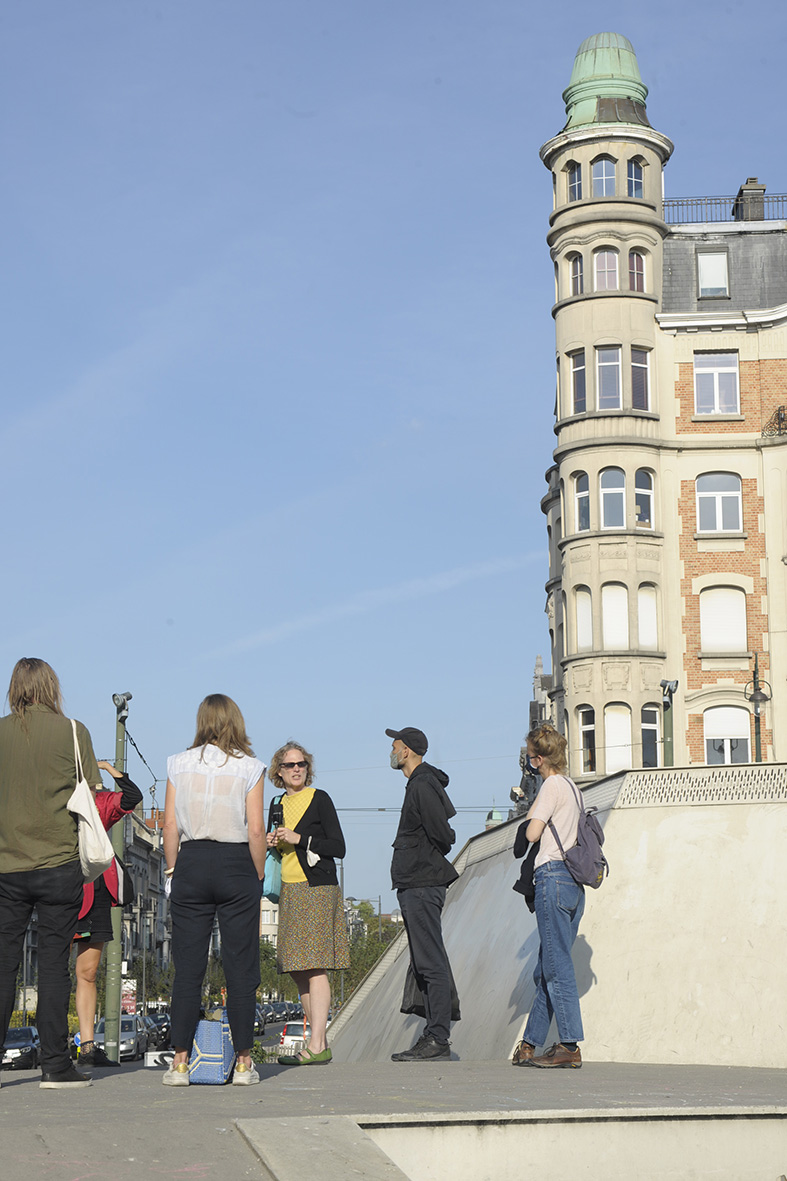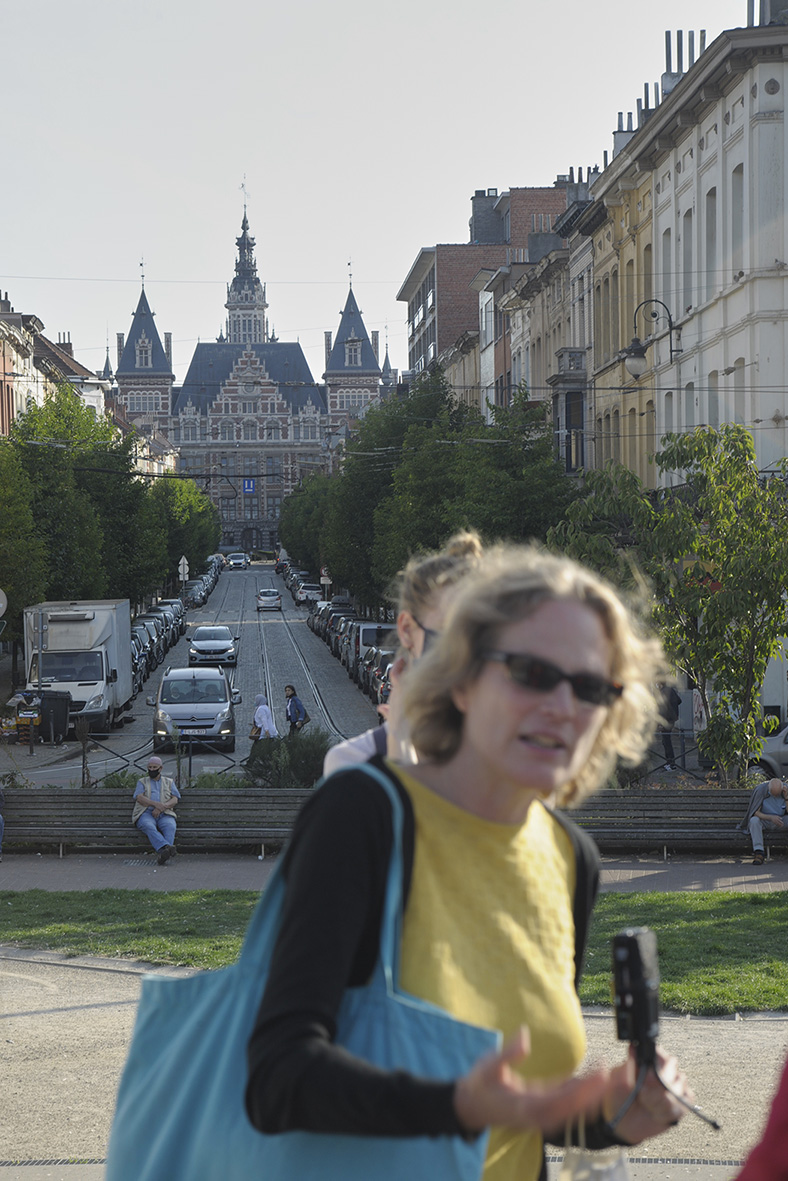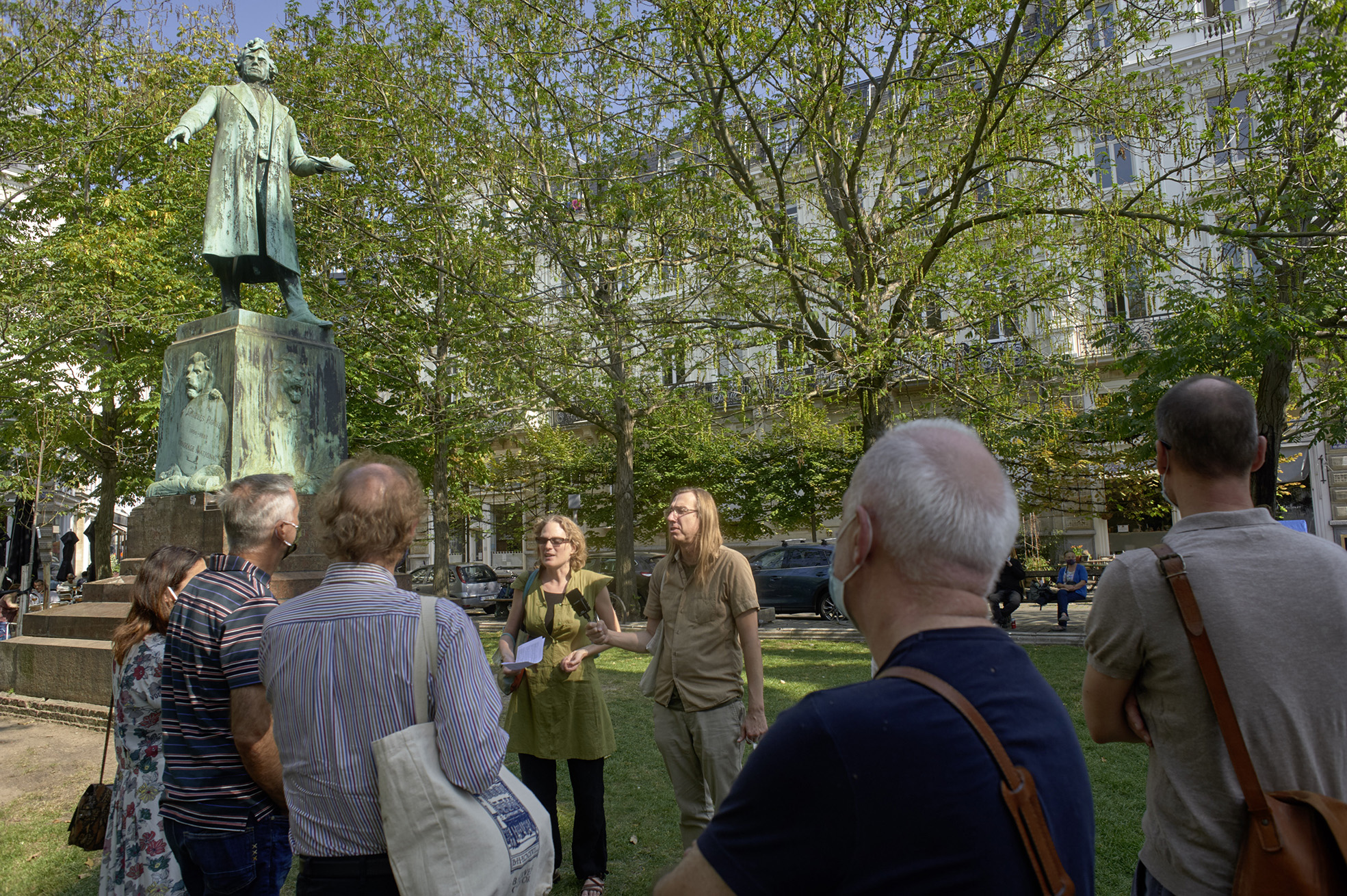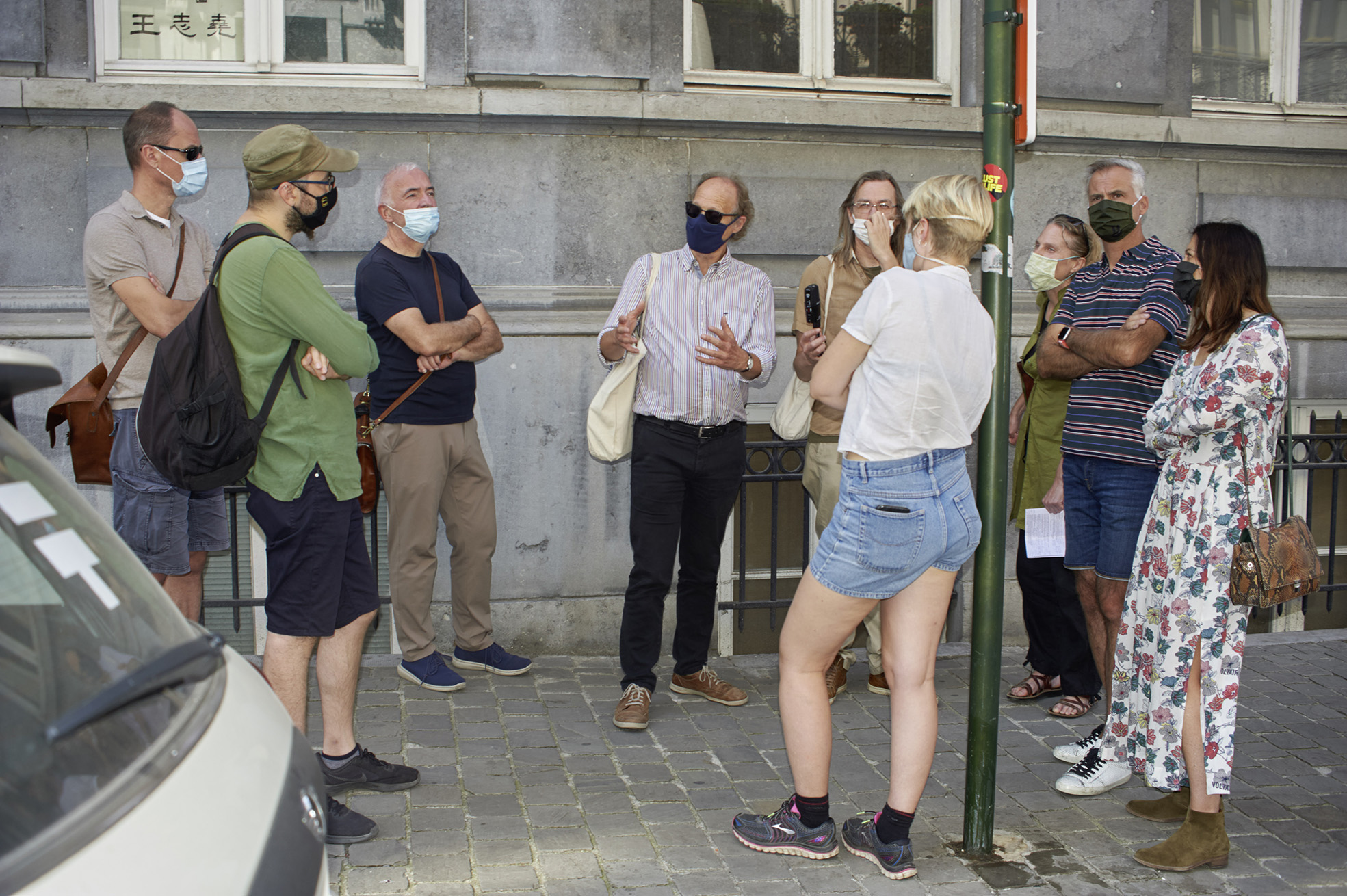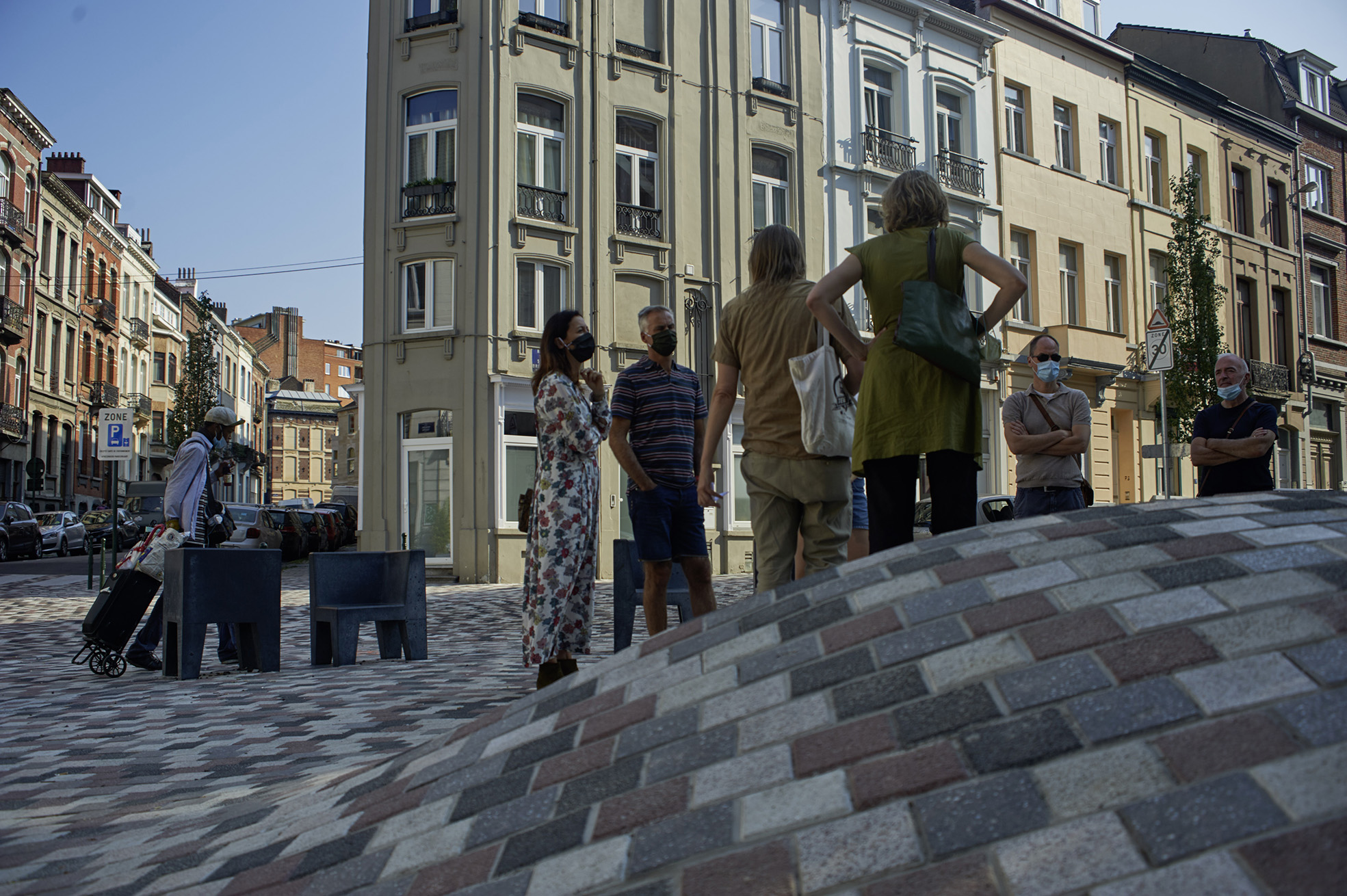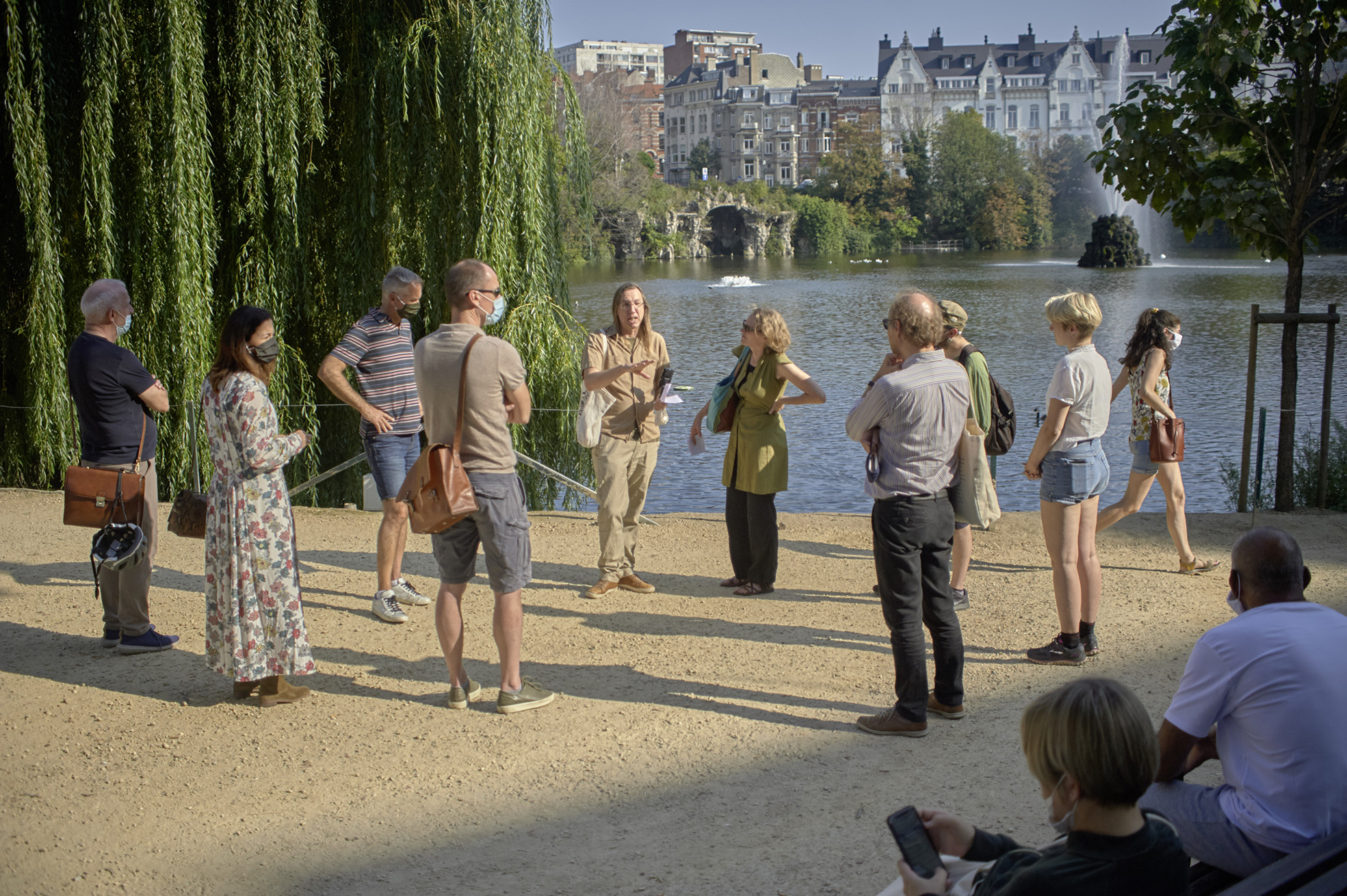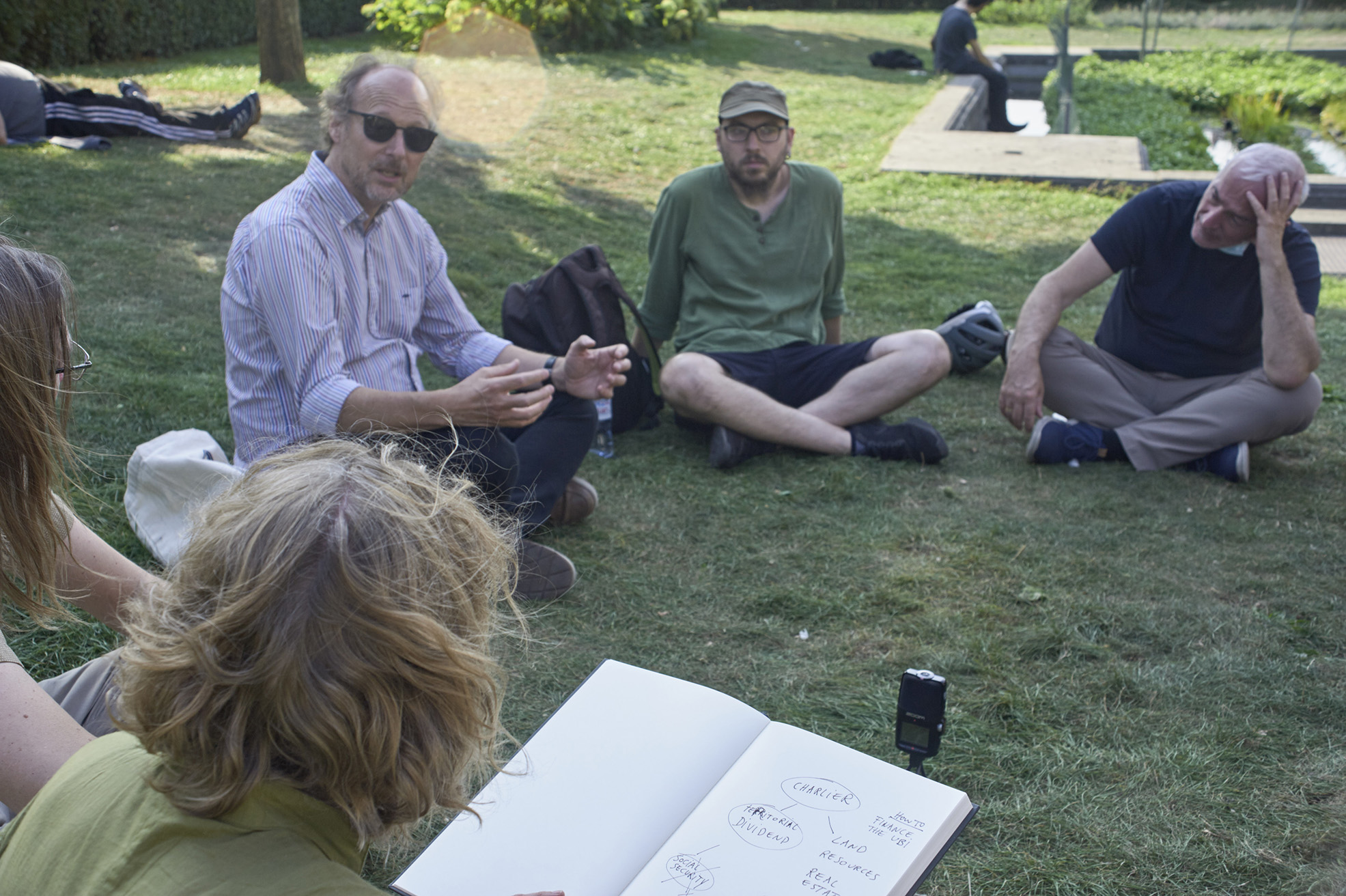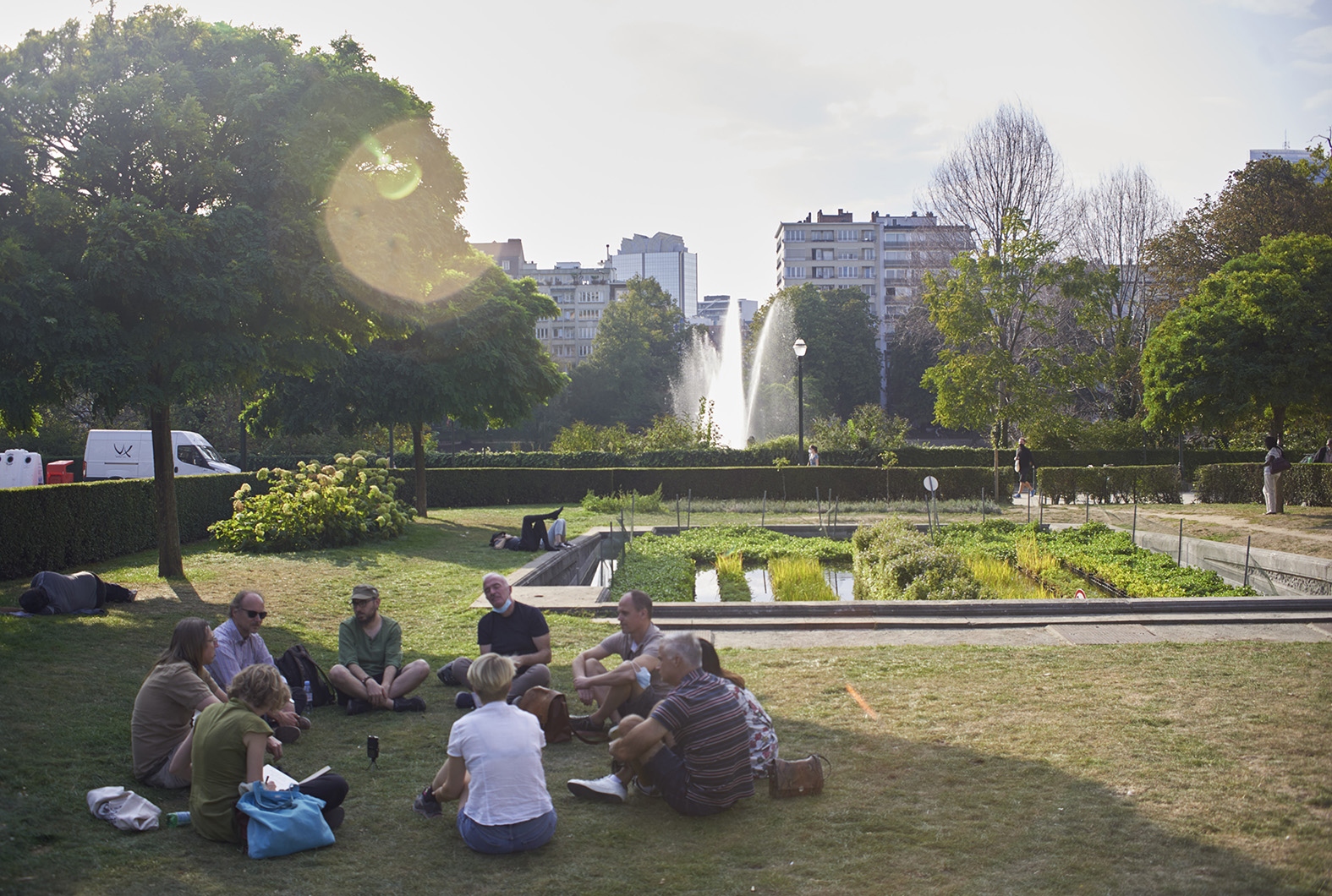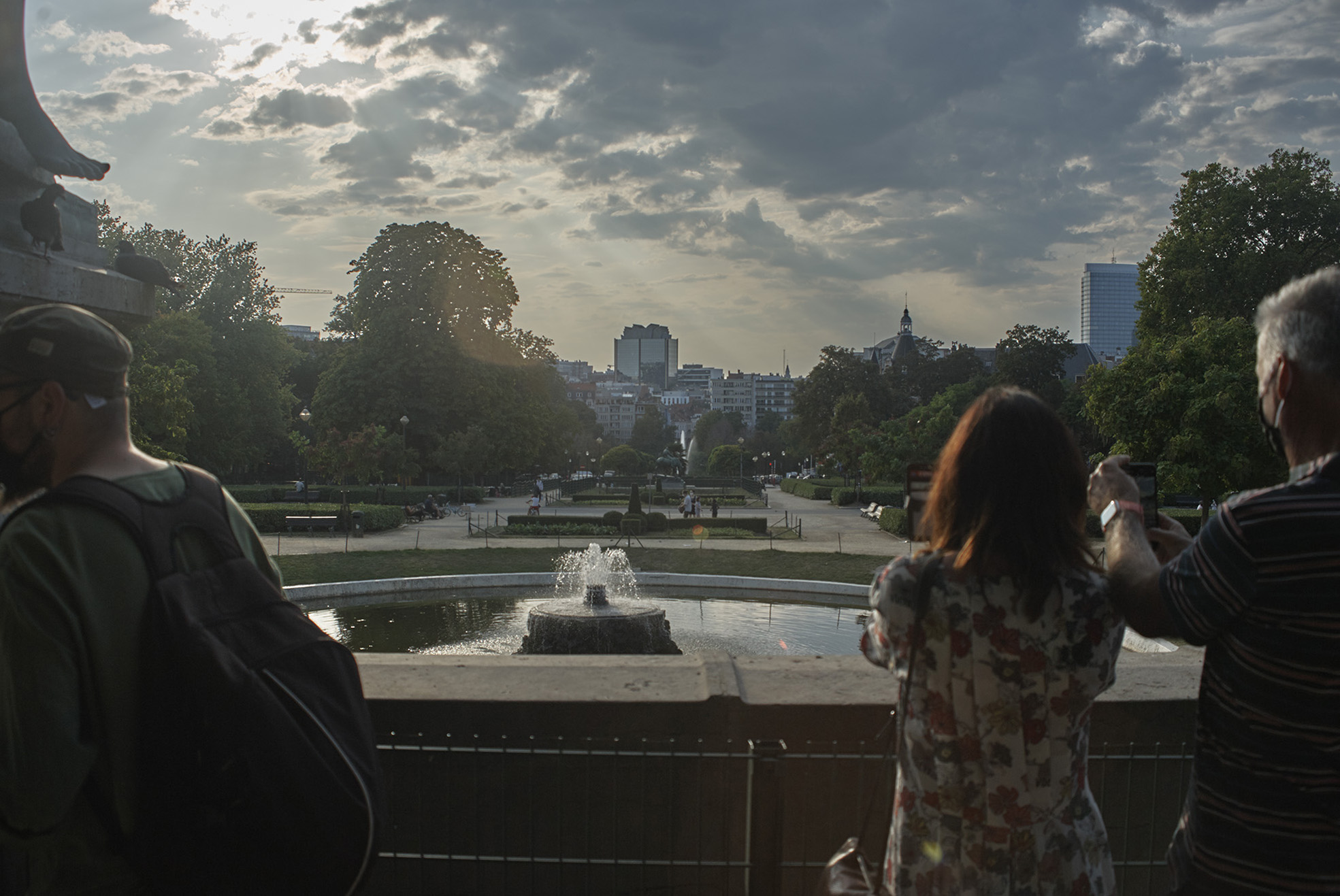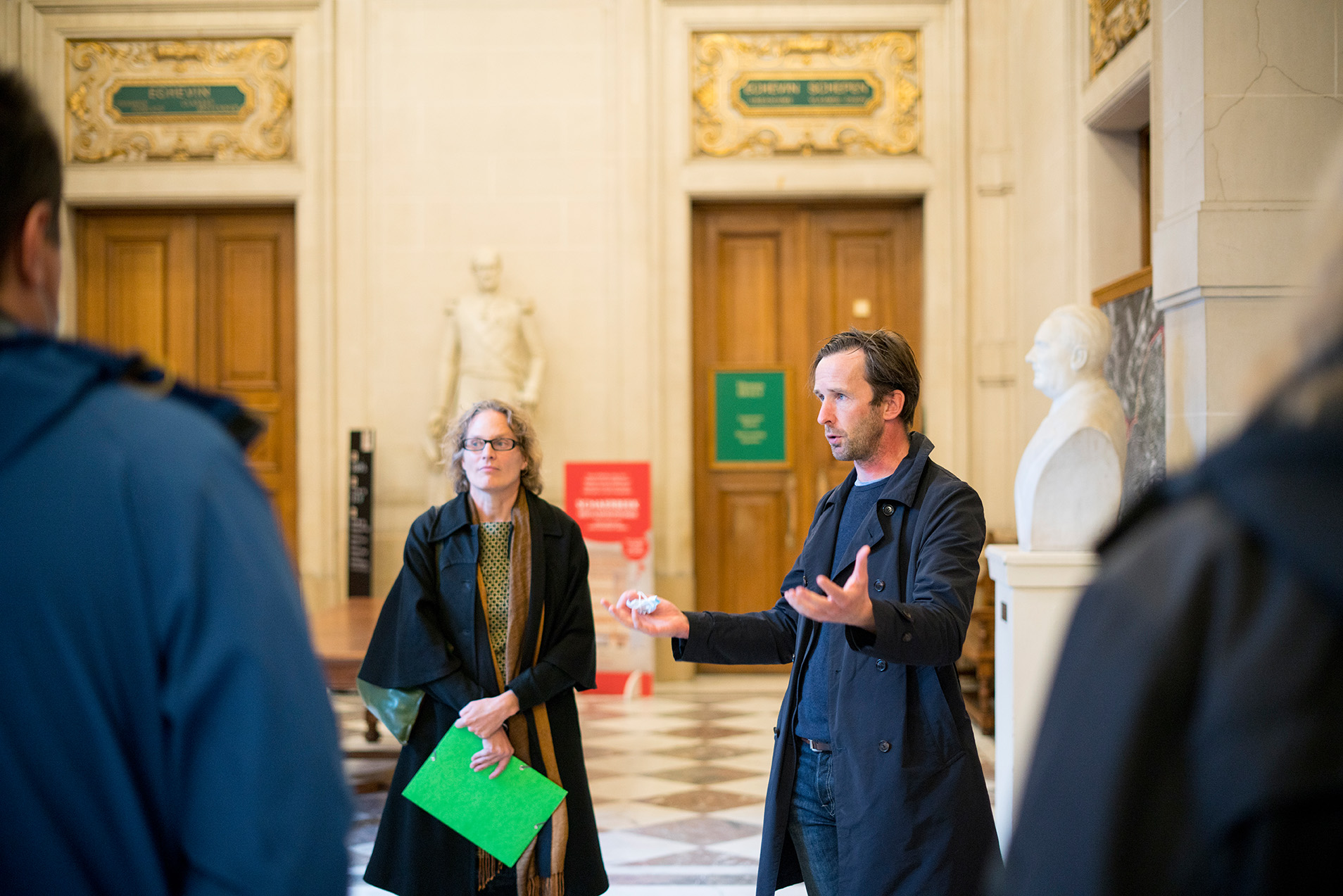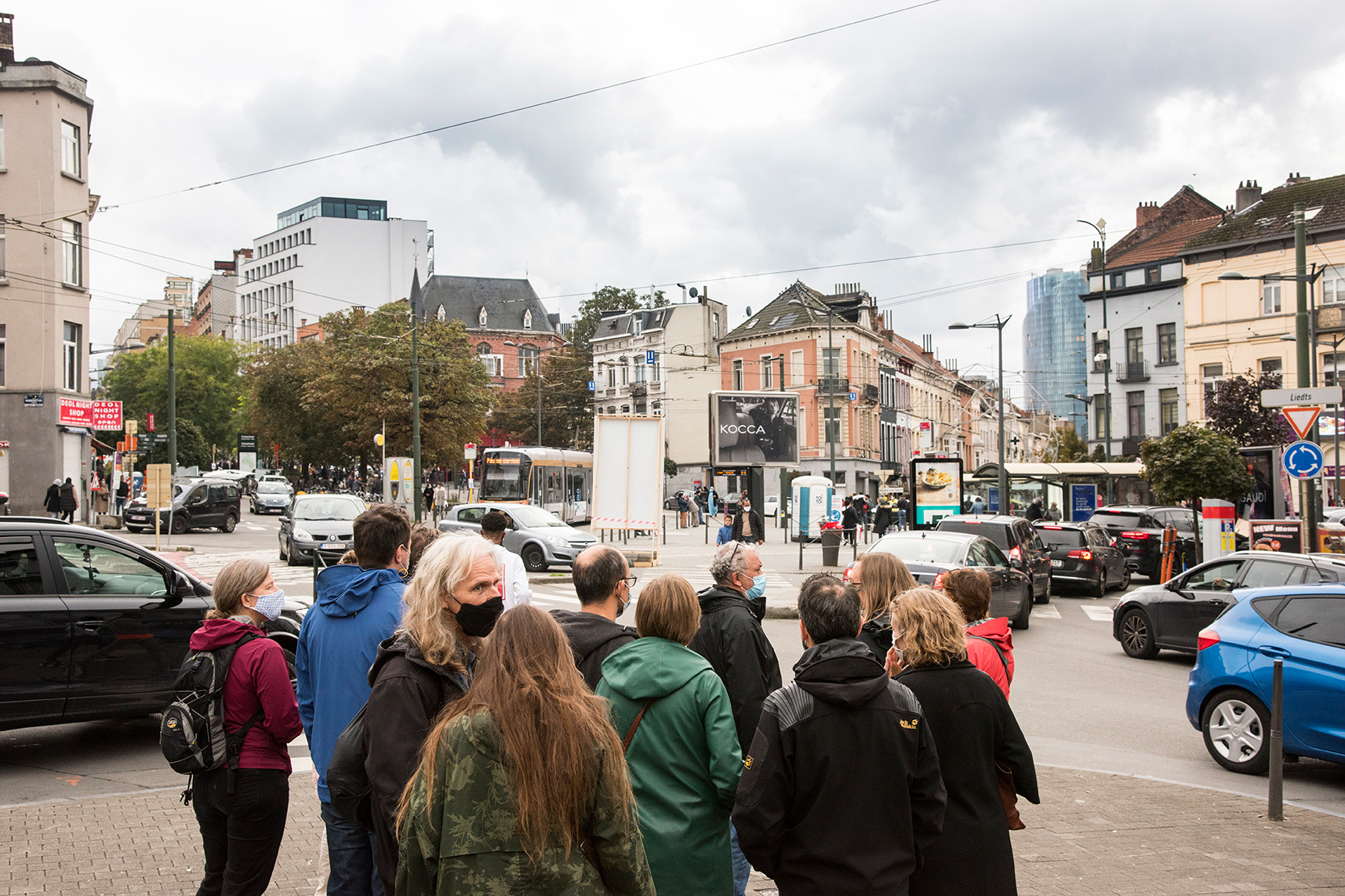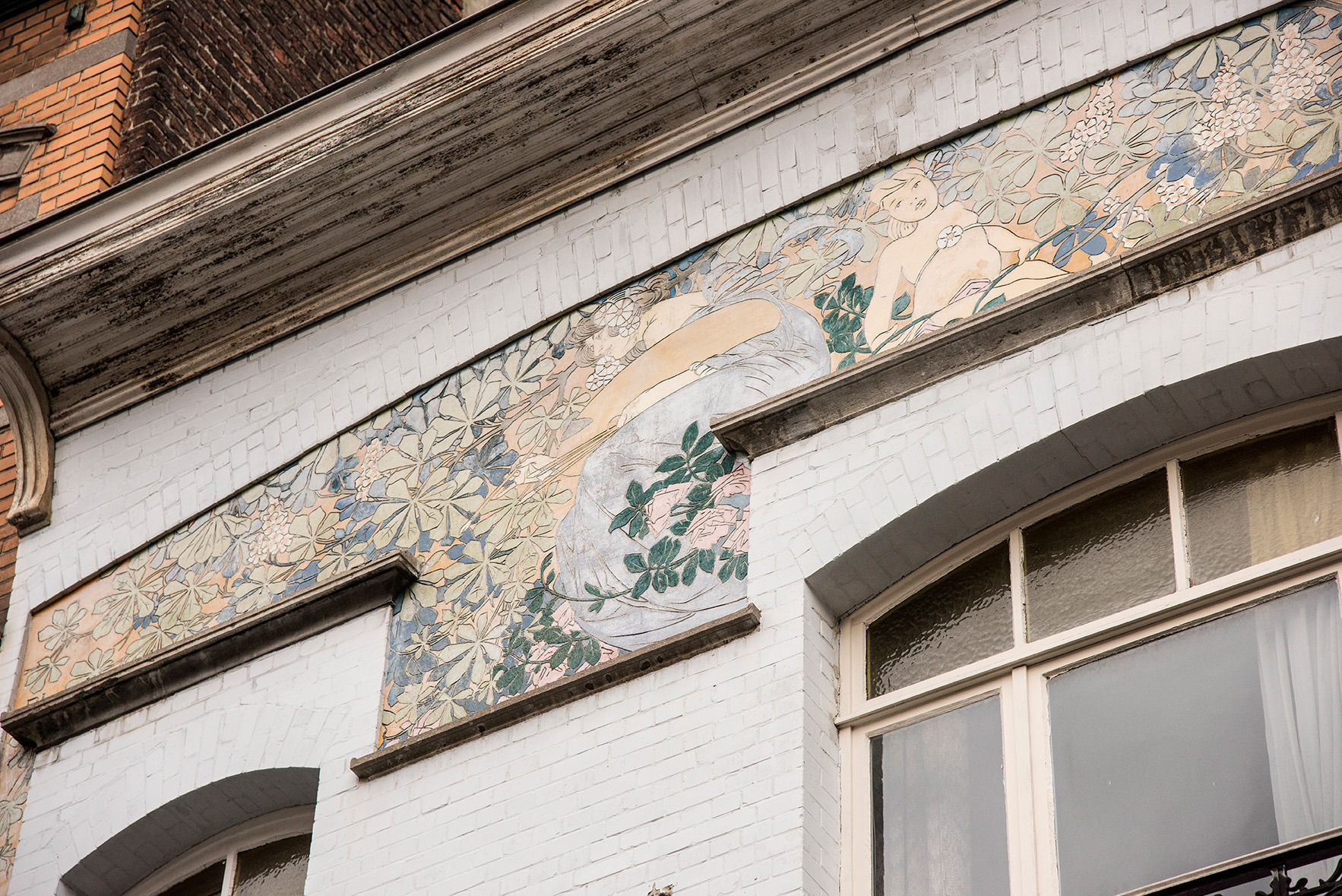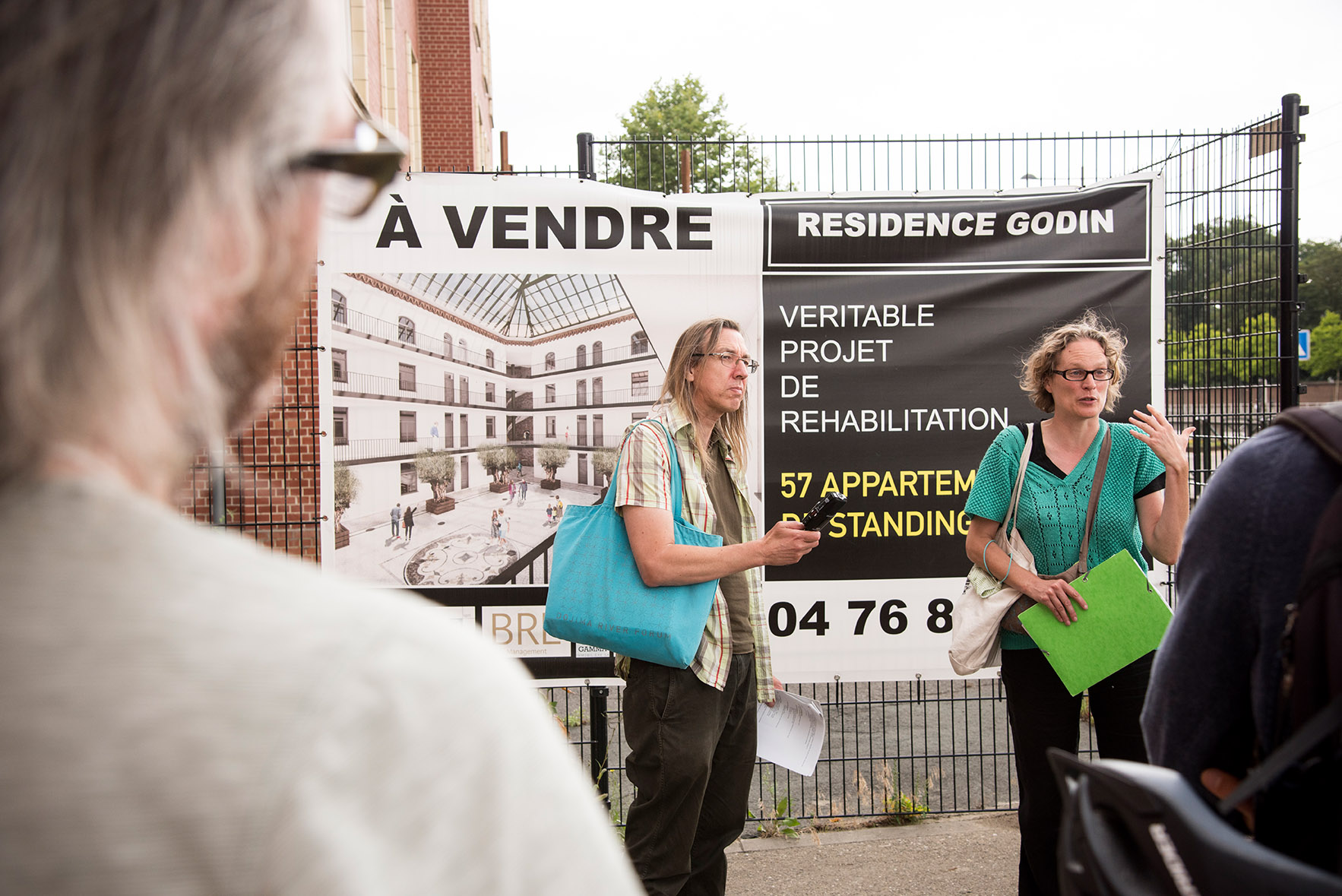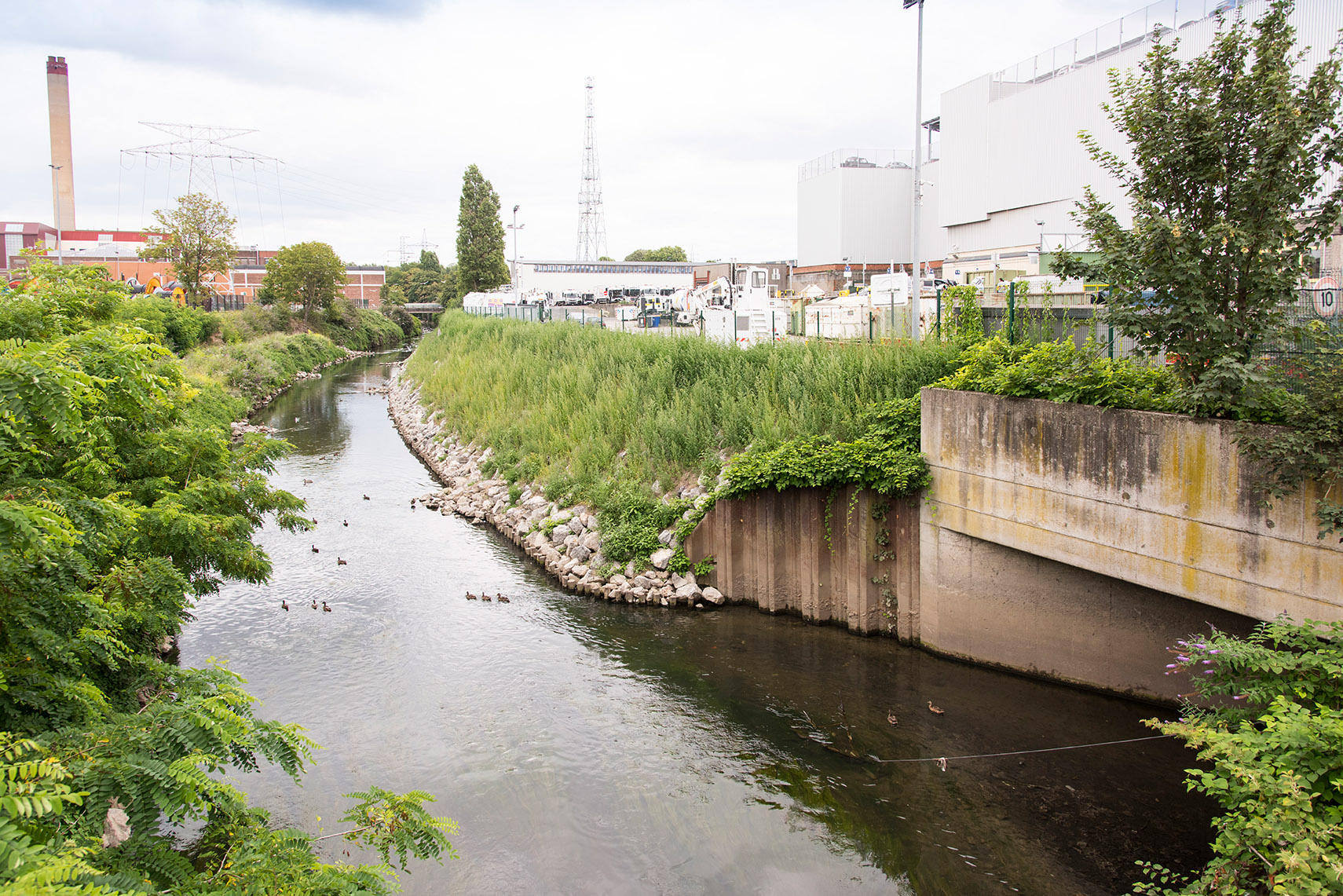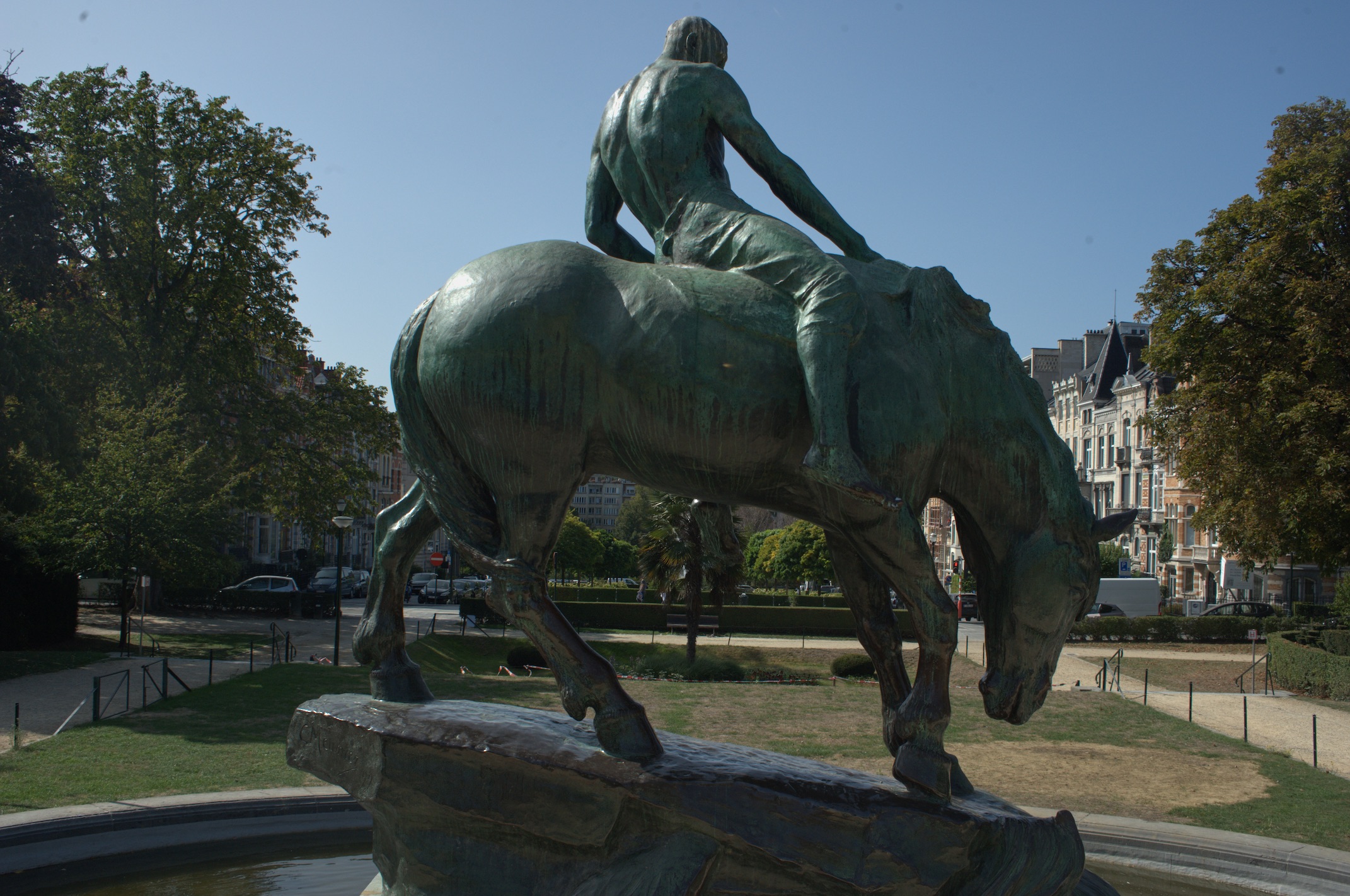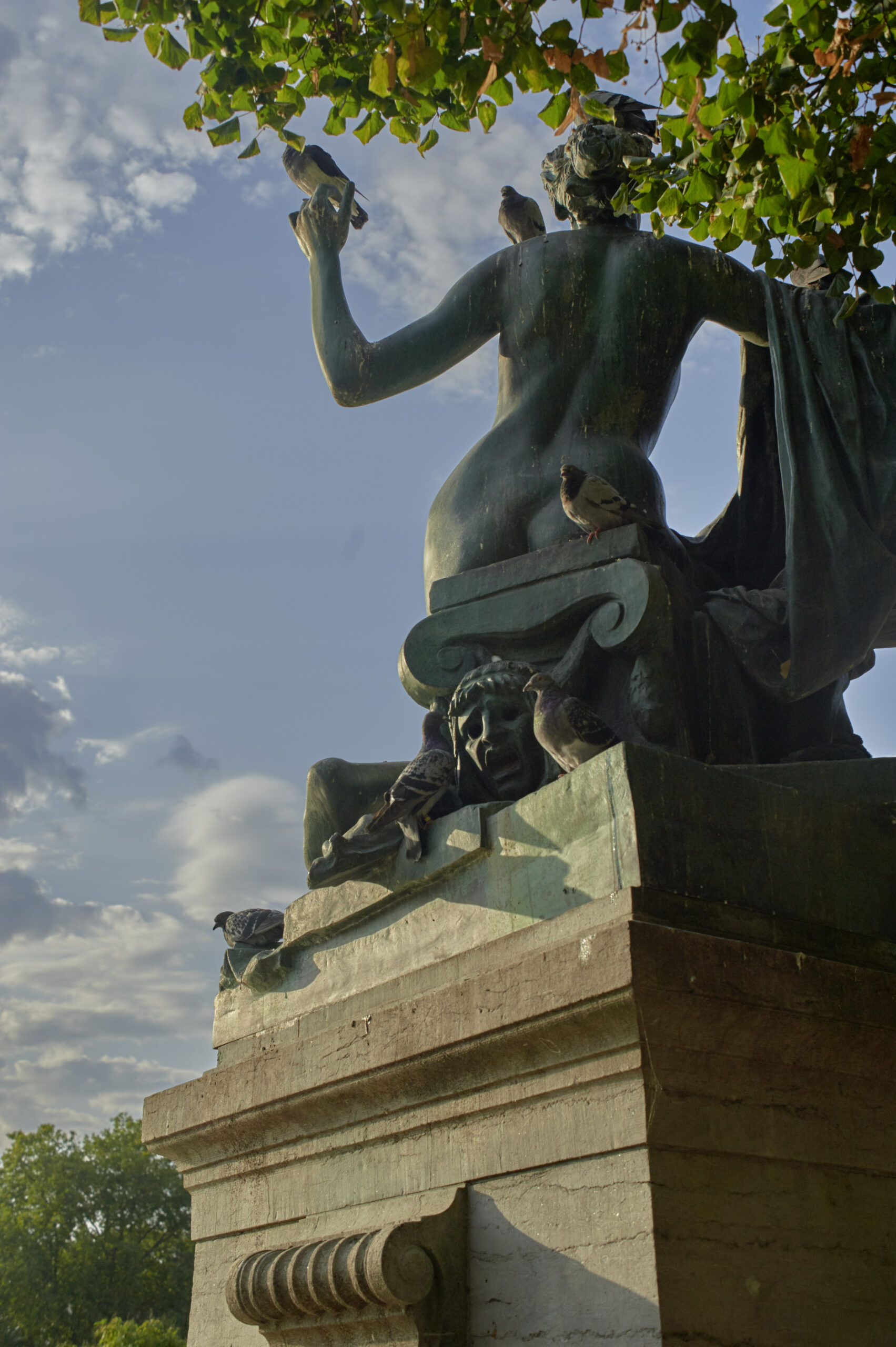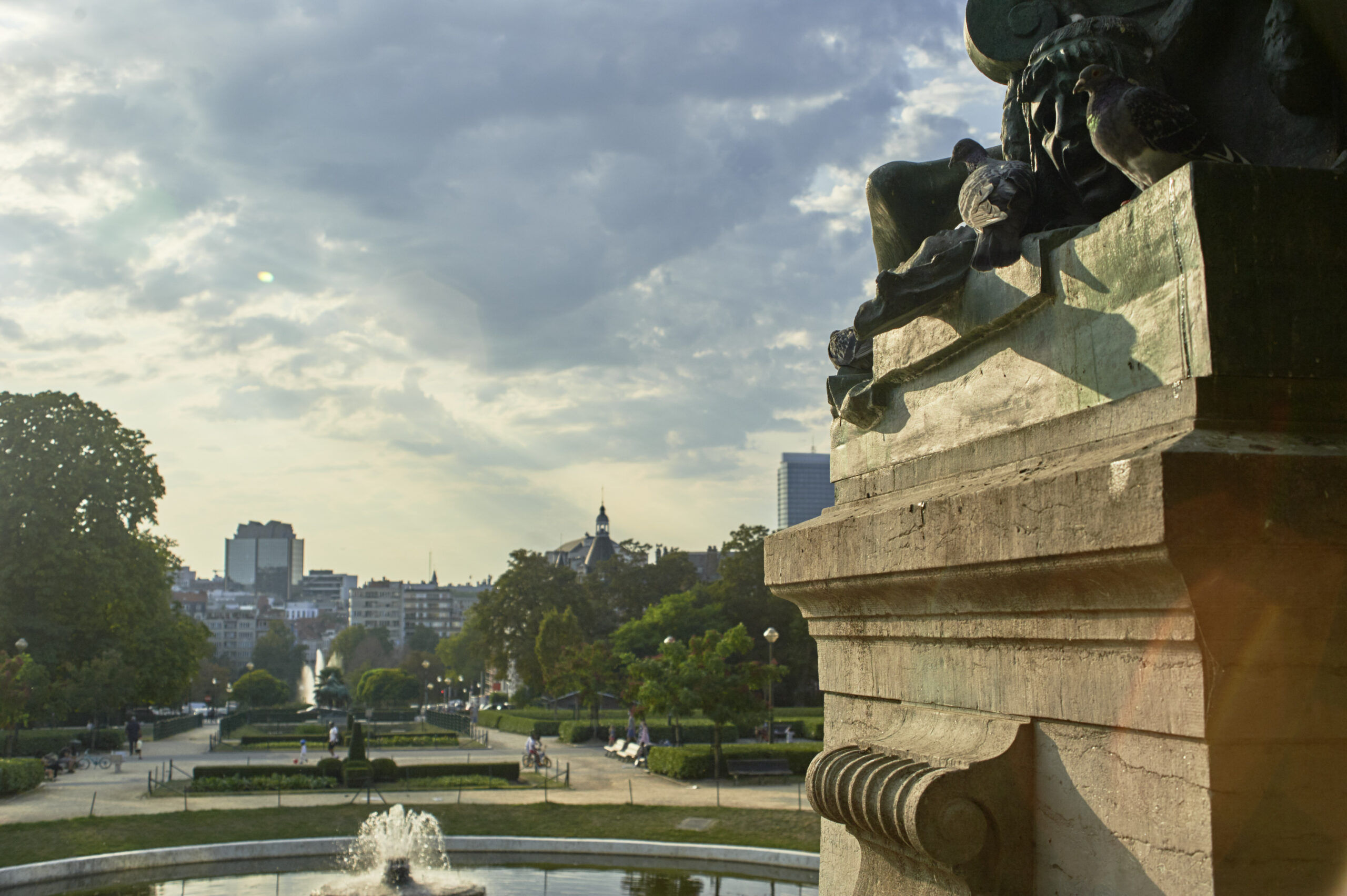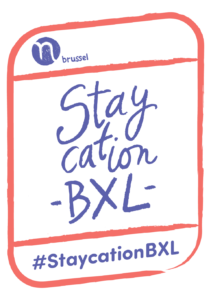Who owns the water? To whom does art belong?
Part of the cross-disciplinary project 7 Walks by Vermeir & Heiremans and legal philosopher Luke Mason
The project develops public walks as its research method and focuses on the question whether private property can be defined in a more stratified way. The artists and Mason explore whether a creative re-imagining of legal concepts can make it possible to govern natural and social commons in a more sustainable way.
7 Walks connects the arts with a natural commons: water. Different aspects of water and how it is governed (from water distribution and water purification to watercourses and sources, …) function as case studies for the walks. As such they can inspire us to see art as an ‘ecology’, in which all stakeholders are interdependent.
Walking is a performative method with an extensive philosophical, literary and artistic tradition. 7 Walks originated in the city of Spa, where it drew inspiration from historical walkers who have visited the famous healing springs since the 16th century. Spa was soon dubbed the ‘café de l’Europe’. Kings and artists, politicians and philosophers walked together on their way to the sources and confronted each other with contrasting views on property.
Who owns the water? To whom does art belong? introduced five public walks in the valley of the now vaulted river Maalbeek in Brussels. Their routes ran through Sint-Joost-ten-Node, the Leopold and the Squares district, Schaarbeek, Evere and the Helmet district, where the river flows into the Senne. Vermeir & Heiremans, Mason, their guests and participants treaded in the footsteps of 19th century artists, politicians and kings, philosophers, lawyers, architects and urbanists.
The built environment, its monuments and streets are testimony to their visions or ideologies regarding private property. Crossing this selected part of Brussels’ material heritage the different walks construct narratives about governing water and the arts. The built environment offers ‘anchor points’ that were then linked to the ‘intangible heritage’, the ideas of philosophers, politicians and artists who lived and walked these places.
The walks entail critical observations of power structures, ideologies or histories, hidden behind façades, integrated in street names or celebrated in monuments that have become part of our daily visual surroundings. Attempts to monopolize art or water were contrasted with places where more distributive practices in the governing of water or art were (and are) practiced. These contrasts formed the inspiration for a productive dialogue with the participants of the walks about more sustainable practices in the arts and the governing of natural commons.
Walking generates a sensory experience and a shared space that makes all who take part in a walk (artists, experts, participants) co-producers. Intense moments of discussion questioned issues of concern to us today. Guests with specific knowledge in law (Julie Van Elslande and Luke Mason), water management (Hendrik Schoukens), the 19th-century art market (Jan Dirk Baetens) and economic history (Guido Erreygers) were invited to a walk. Ideas arising from the discussions were plotted on a ‘map’. This rendered ‘concept maps’ that create a basis for future walks, conversations and documentation. The clusters in the concept maps form the basis for a future symposium in which participants to the walks, guests, (inter)national experts, artist peers and the public will be invited to elaborate further on the generated ideas in key notes, presentations and roundtables…
WALK 1: Water for private investors?
Saturday 18 July 2020 – 2pm to 5pm
In the 1860s the Maalbeek was covered in an attempt to avoid epidemics and a process started that would lead to the creation of a modern water distribution network. Today, even though the distribution of water is a public service in Brussels, it is still a question whether the current form of the public system is a sufficient guarantee to access to water ? Moreover, if we consider water a commons, should it then not also be governed as a commons?
WALK 2: A social utopia on the Maalbeek?
Saturday 25 July 2020 – 2pm to 6pm
Guest: Hendrik Schoukens
Jean-Baptiste André Godin (1817-1888) was a ‘social utopist’ who created a co-operative enterprise that involved its workers in management, and through which the workers eventually became the factual owners of the factory. At the former Godin factory in the northern canal district Godin understood that he needed to make the material and intellectual equivalent of wealth available to his workforce. Access to culture was central in his emancipatory project. Following up on this, if we assume that we own each other’s work, which is the basis of social utopia, do we then have the right to collectively define what ‘art’ is?
WALK 3: A monopoly on artists?
Saturday 12 September 2020 – 2pm to 6pm
Guest: Julie van Elslande
Governing water as a commons entails a shared dialogue with political decision-makers, with technicians, with water operators, researchers and citizens. This dialogue can generate a collective intelligence and global vision of water management in its environment, with more open and applied decision-making for action on both a local and global scale. The monopolisation of the representation of the Schaarbeek-based artists Louis Gallait and Eugène Verboeckhoven by the London art dealer Ernest Gambart shows the other side of the coin. But cannot art also be considered a commons, and can it not be governed as such? Can we imagine a form of collective intelligence that would apply to art and culture, in parallel to how water and its environment can be managed?
WALK 4: A pioneer for universal basic income
Saturday 19 September2020 – 2pm to 6pm
Guest: Guido Erreygers
According to Joseph Charlier, who lived in Sint-Joost-ten-Node, natural resources were intended by God to provide a guarantee for the ‘vital needs’ of all persons. Charlier proposed a basic income scheme in 1848 that would be paid unconditionally to every member of society, regardless of need or ability to work. Charlier’s philosophy “The soil belongs to no one, but the fruits are for all” gave rise to the concept of a ‘territorial dividend’ which would be distributed to all. Can a renewed concept of ‘ownership’ contribute to a better distribution of added value so that all stakeholders in an ‘ecology’ can benefit from it?
WALK 5: A public shrine for the arts?
Saturday 3 October 2020 – 2pm to 5pm
Guest: Jan Dirk Baetens
Belgian art flourished from 1840 onwards due to the numerous public commissions and financial injections from the government to stimulate patriotic sentiment for the young state of Belgium. Schaarbeek created its city hall as a palace of the arts and named streets after many of its local artists of which many luxurious artist studios still survive. In addition to this public appreciation, the representation of some of these artists was monopolized by art dealer Ernest Gambart, limiting access to their art. Why would access to art be as essential as access to water?
credits:
Who owns the water? To whom does art belong? was made possible with the generous support of Staycation BXL, a project of VGC and of Alles es Just!, Immaterial Heritage Festival, Schaarbeek. Community Center De Kriekelaar hosted the walks. Production: Jubilee

